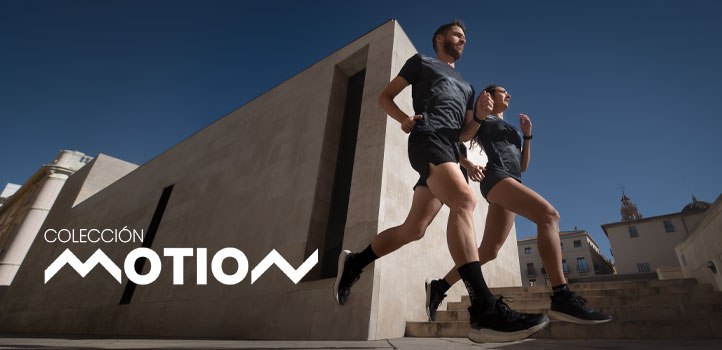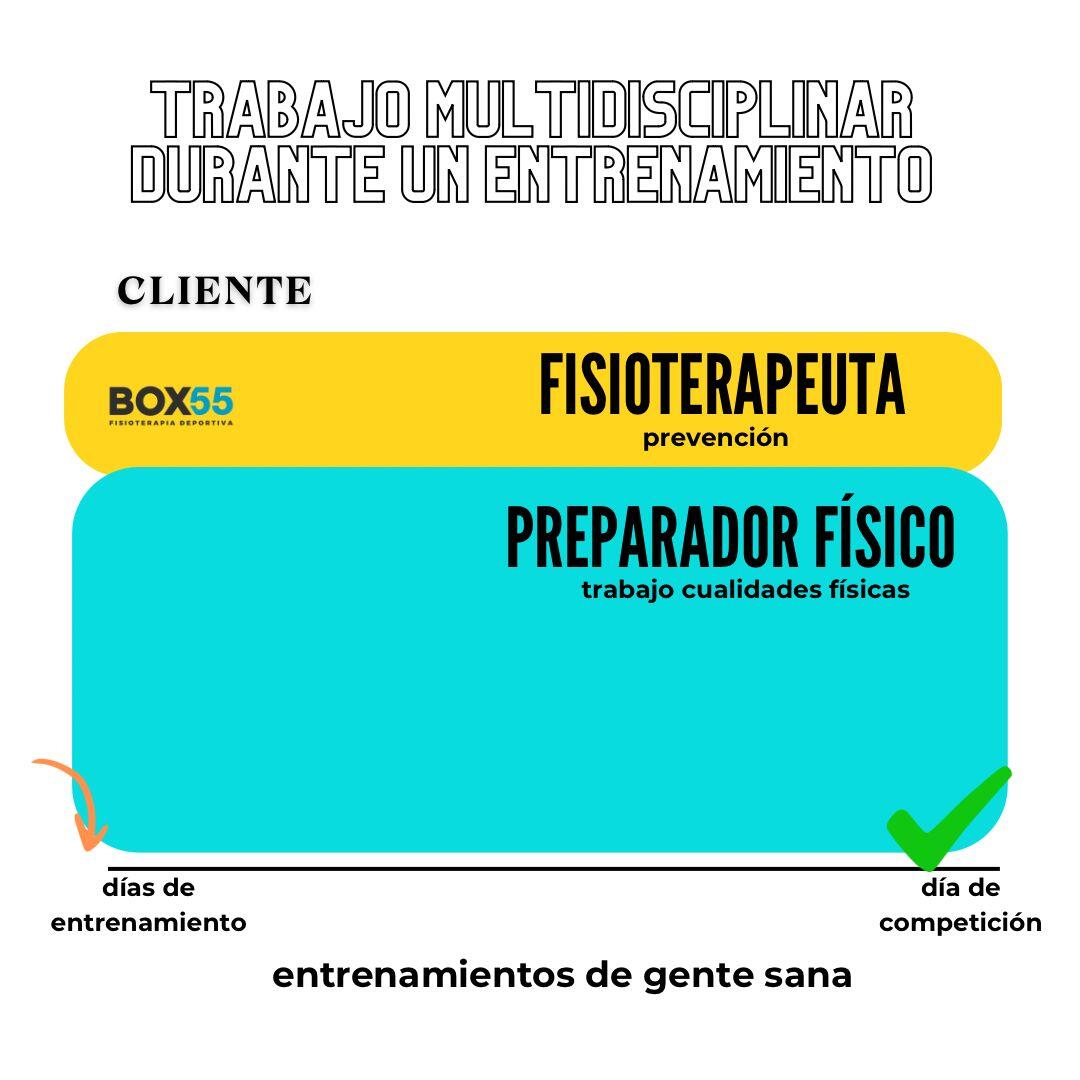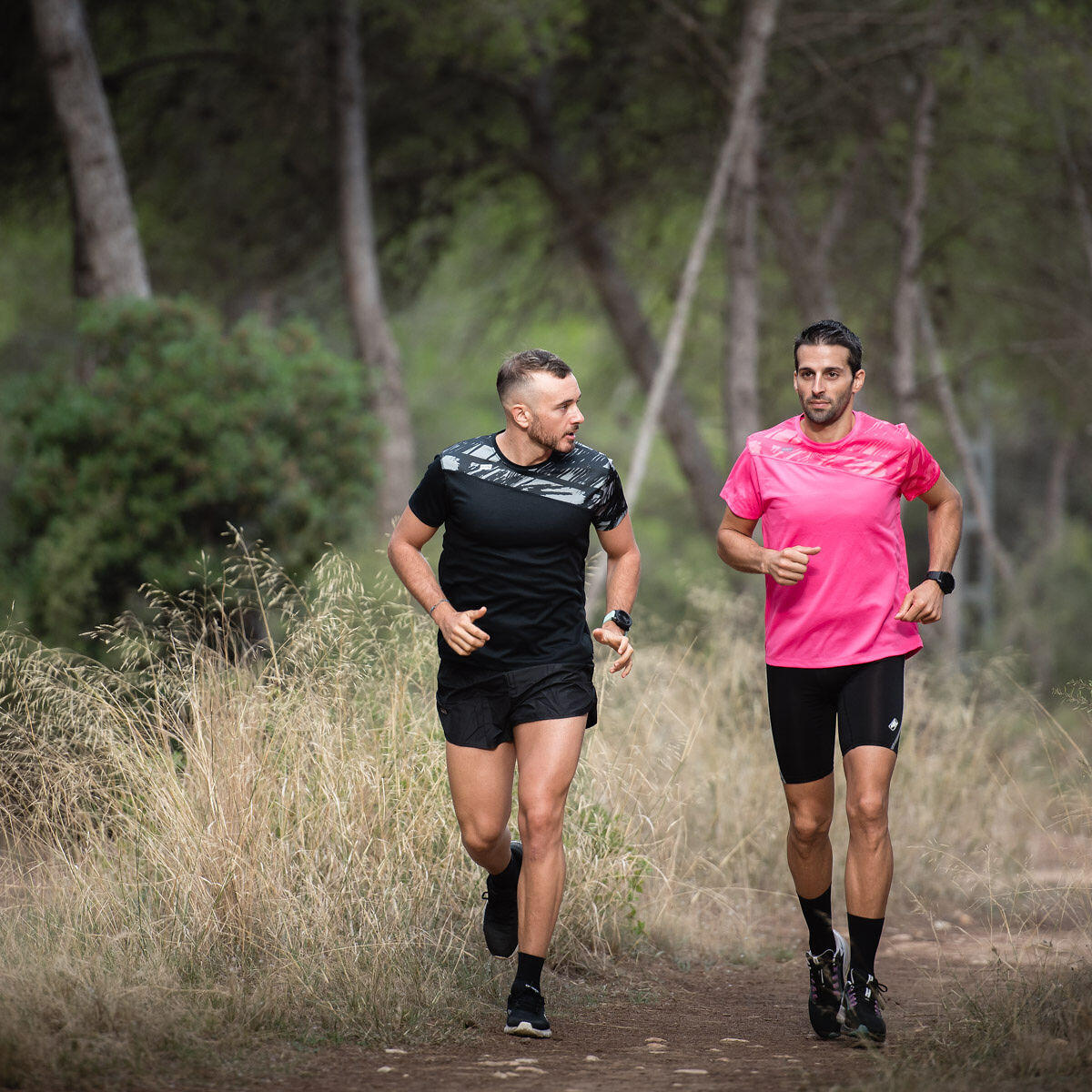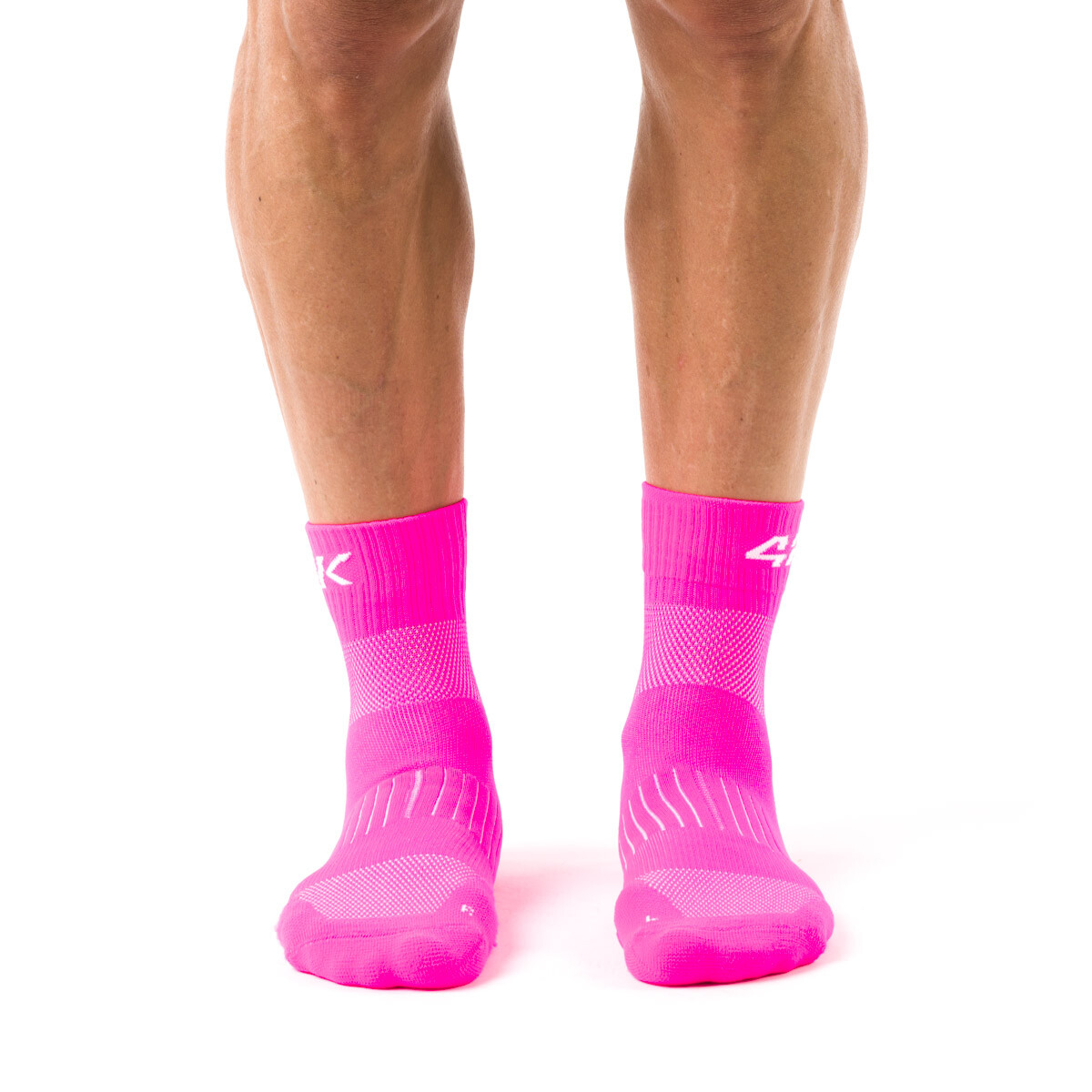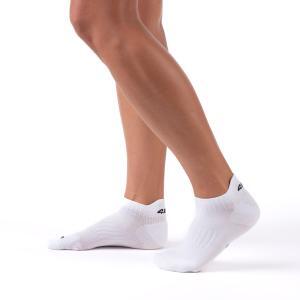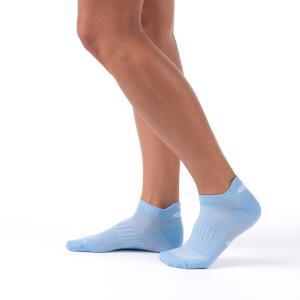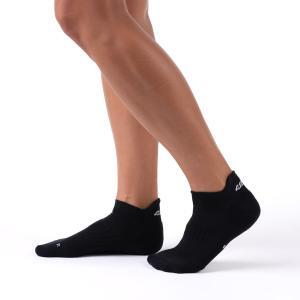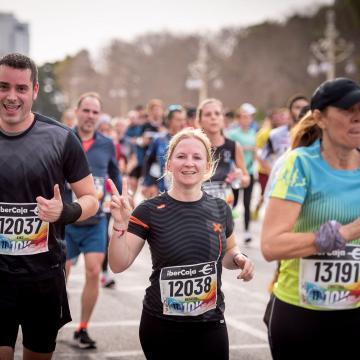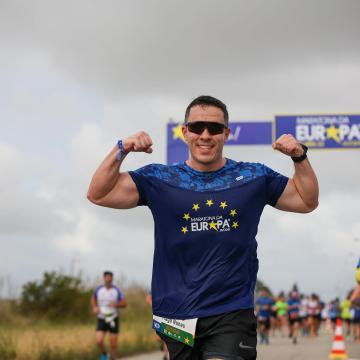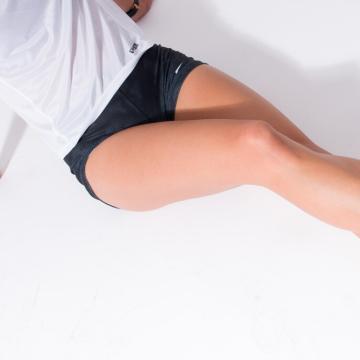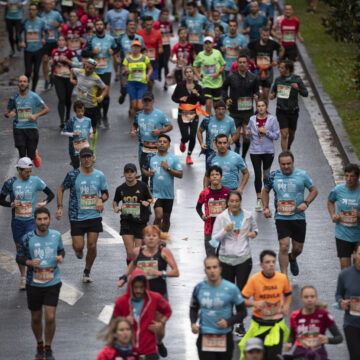Subscribe to our newsletter to find out about all the news and promotions, and automatically receive a welcome discount coupon in your email.
post -> Finish the races going down well

All runners have always known that the descent is where a race is won or lost, making the difference, as demonstrated by the pioneers of mountain races and good downhillers such as (Fernando García several times champion of Spain), with great exhibitions, coming back and shortening partials of more than 10 minutes, in the last descent towards the finish line. Going down well gives you efficiency and greater speed.
Many times runners think that they will already take advantage to press on the descents and be able to scratch a few minutes on the clock, but this is not always the case, because the descents are very hard due to their technicality or duration, demanding muscular fatigue from the runner eccentric. That later, once they are in the race, they realize that at the right moment they are lacking in strength or in pain due to wear and tear and passage of time during the test.
To see good results you have to improve your descent technique, trying not to forget anything: react quickly to stimuli, be resistant to so many impacts and go as fast as possible during the descent.
We could talk about two types of preparation, the first:
Adapt to the environment: You have to try to train on all types of terrain: from easy trails and tracks to more complicated sections such as cresting, so when the opportunity comes, don't be afraid to step on the environment where we are.
Manage our own fear: This is given by our bad thoughts for not wanting to hurt us or injure ourselves when we fall, we have to take a good progression through the terrain and start from easier to more technical terrain. Sometimes it can help us to wear short bike gloves in case we land not to damage our hands.
Runner's Concentration: when we are in training, you have to be thinking about what you are doing, because many times a second of distraction means ending up on the ground, to refine in this aspect you always have to bring your vision and mind on a par.
Visualize the environment: when we do descending series we have to keep our eyes ahead of our steps, for when the moment of support arrives and to know that we are going to meet.
Downhill series: this perhaps the most important, since it is the specific section of the training to improve the descents, you have to choose sections of the route and go down them at high intensities and repeat them several times depending on the specific work of the session. Little by little we will be looking for the difficulty to have a good progression.
The second part of the preparation, just as or more fundamental than the previous one, is the strength work, forgotten for many or simply because they do not like to lock themselves in a room or gym to work on it. Strength is paramount and we will benefit from it by:
- Increased muscle strength
- Increase in local muscular endurance
- Prevention of injuries during sports practice
- Improves performance capacity in competitions
- Better assimilate large loads of volume or intensity.
The training will be divided into several phases, to increase and assimilate the work well.
General strength conditioning: in this phase we are going to work with general exercises for both upper and lower body, doing about 8 or 10, in the first weeks we would simply do them with self-loads and little by little we will introduce a light weight that we can always do enough repetitions of 15 to 20. To make the session more enjoyable we can work it in the form of circuits.
Maximum strength phase: once we have a base to improve during the season, we must also work on strength with high load intensities of 80-90%. We can work with polyarticular exercises on 4 exercises per session, (squat, Olympic movements such as clean or snatch, press) in this phase the repetitions are few between 3 to 6 with long breaks over 2 to 4 minutes. You have to be careful with these exercises since they are open chain and if you do not have a good technique we can hurt ourselves, in the case of bad technique we can use closed chain machines.
Specific or natural strength phase of the race: in this phase we will use exercises that directly work the muscles of the race and proprioceptive exercises. For this, it would be appropriate to use materials such as: bosu, trx, muscular strap or fitball among others, to get the most out of it and look for specific exercises with or without load. For this we will increase the number of repetitions to 10-15 again or working with time intervals. Within this phase you can also work on plyometrics or multi-jumps in tiers or flat.

Competitive strength phase or transfer to the race: in this last phase we will work with real running movements, reproducing the specific gesture with or without load. We will work on it by looking for different situations in which we can find ourselves during the competition. On the flat, ascents or descents, in this case we would make a paragraph when dealing with the descents and we would focus on them. We can use ballasts or tensioners. We would carry out specific series work in descents, or take advantage of the filming with many hills and immediately afterwards to crown doing the series in descent.
Author: Pep Signes
- Capacity: 13 liters.
- Composition: 210D Polyester.
- Sizes: 33cm x 42cm.
- Reinforcements on the eyelets.
- Exclusive customization National Police.
The 10k has become the popular test par excellence and for many people who are starting out in the running It is the first great competitive challenge in which to defend a number. In this article we are going to offer you tips to prepare for a 10k.
The 10k is a distance that more and more popular runners dare to do every day. The 'boom' of running In the last decade it has meant that many tests of this distance have been born and that almost all cities or towns of a certain entity have their ten thousand meter race.
In many 10k events (it also occurs in distances such as the 15k, the half marathon or the marathon) it is possible to find people who face the distance for the first time without adequate preparation to complete the test within the time allowed by the organization; The problem, however, is not arriving outside the time limit but rather subjecting the body to an effort for which it is not sufficiently prepared.
We have turned to the specialist Marcos Greus, high-performance trainer and coach in endurance sports, to ask for advice for someone who wants to prepare for a 10k (their first 10k) and do it in a sensible way and with the peace of mind of having the necessary preparation to face the challenge.
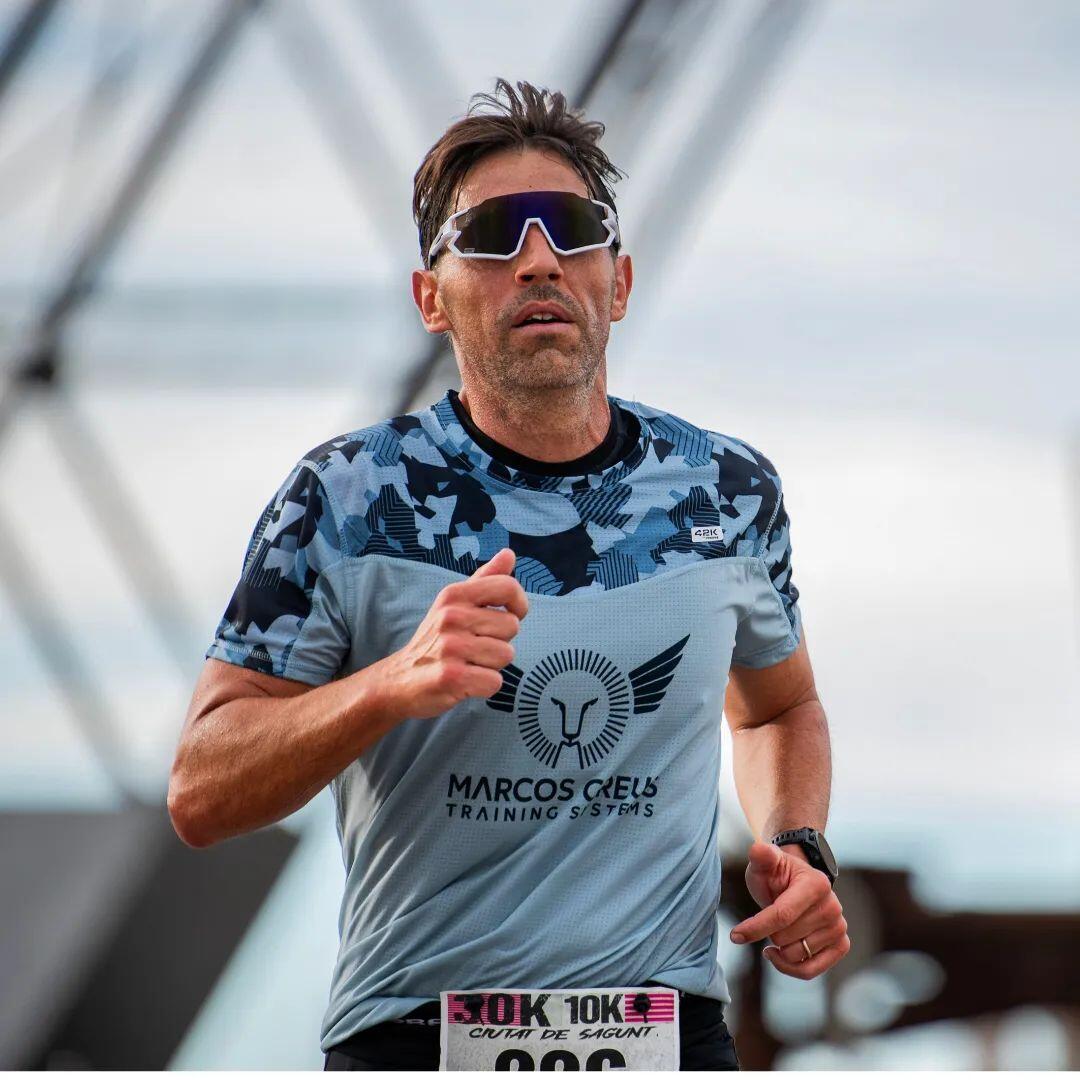
We have asked you a series of questions, taking as a starting point the situation of a popular runner who is already able to endure 30/40 minutes of continuous running, who goes out running 3 days a week and who is willing to increase your training time (plus time per shoot and adding a fourth day of training).
Preparing for a 10k requires being in shape
Preparing for a 10k is usually the first big sporting challenge for many people who get into running. runningIs it really a distance suitable for anyone?
Many people start running for health reasons, to feel well, to reach or maintain an adequate weight... As long as there is no medical contraindication, it is a good decision to start running, but running is a demanding physical activity that requires minimal preparation to avoid scares or problems; I always say that You have to be in shape to start running and not run to be in shape..
When you start running it is very important to be sure that you are in physical shape that guarantees that you are not at risk of injury.
It is more common than we think to find people who start running after a long time of total inactivity, who are overweight (with the risk that this can pose for the joints), without muscle tone and without having a prior medical check-up. And at the height of absurdity there are also cases of people who dare to run starting with popular races, which is a blunder and recklessness.
The boom of running that has been experienced in recent years has meant that many people sign up for races without adequate preparation and in some cases even without having barely run before. I have known cases of people who have signed up for races right away because they said that they found a stimulus to train and motivate themselves to run.
Prepare a 10k requires being in shape as a first requirement and, furthermore, committing to carrying out preparation work that is demanding because we are faced with a distance that seems very affordable (and really is with the right preparation) but that is not within everyone's reach because it involves running for around an hour uninterruptedly. ; It's one thing to run 20-25 minutes and quite another to run 60 minutes continuously..

How long is it advisable to have been running to consider running a 10k with guarantees of finishing it correctly and without problems or taking risks?
In general, my recommendation for anyone would be to face the challenge of preparing for a 10k when you are really sure that you can do it. run between 10 and 12 kilometers with solvency. What do I mean by “solvency”? Well, the cardiorespiratory system, the muscular system and the bone and ligamentous system are capable of supporting 10 kilometers at an easy pace; At that moment and not before is when you should think about tackling a 10k.
Many people go for their first 10k without having gone beyond 7 or 8 kilometers and, fortunately, nothing happens to the majority, but it is a distance in which there are risks that can cause discomfort or even injuries that could be avoided with a little more preparation, perseverance and, above all, patience. In recent years impatience has prevailed in the running popular; Fear and respect for distances have been lost, which is something that seems worrying to me.
When you can run 10 kilometers reliably at an easy pace, it is time to slightly increase the intensity and volume of training kilometers to face a 10k.
And why increase intensity and volume in training? Well, because in a race, inevitably, you will run at a faster pace than in training; When you put on your number it is normal to want to give your best and the body has to be prepared to run at a higher intensity.
Therefore, the sequence of steps to follow before facing the first 10k would be...
First step: Be able to run 10 kilometers with ease at an easy pace.
Second step: When you are already able to run 45-50 minutes three times a week with ease, it would be a good time to think about running a short race, 5 or 7 kilometers, to have a first contact with the competition before making your debut in 10k.
Third step: Increase the intensity and volume of kilometers to prepare the body for the highest intensity that we will demand of it on race day. How to increase the intensity? With short fartleks, such as 10 one-minute changes of pace with breaks (light jogging, without stopping) of 2 minutes. How to increase the volume? Running at a calm pace 12/13 kilometers.

10-12 weeks of specific preparation to prepare for a 10k
How long before the test would it be advisable to start training to adequately prepare for a 10k?
It depends on the starting state of each person; Starting to run from scratch is not the same for a sedentary person as it is for an active person who exercises or practices other sports regularly.
The starting state of each person will be decisive in establishing what type of training, how many days of training and what the appropriate planning should be to aspire to run a race safely and without risk of injury or health problems. .
At this point I want to claim the importance of a professional in Physical Activity and Sports Sciences being the one who determines what the optimal planning is and is also the one who guides the path of preparation; Only a physical preparation professional will be able to objectively determine what a person's starting physical state is and, therefore, what is the most appropriate preparation to face the challenge of preparing for a 10k.
In the case of an active person (not sedentary), who performs physical activity with some regularity and who does not have any physical limitations or medical contraindications, the normal period to prepare for a 10k would be 10-12 weeks of training running 3 times a week and doing at least one day of strength training.
What is essential from the point of view of a physical trainer before starting to prepare for a 10K?
Determine very well what the person's starting point of fitness is. Something very important for me is to make a anamnesis Sports, that is, an analysis of the medical history and personal and family history to be able to adjust the training loads as much as possible to the reality and circumstances of that person.
As I have pointed out before, starting to train a person who is coming from a period of inactivity (whether due to injury or disconnection from sport) or a sedentary lifestyle is not the same as starting to train someone who already does some sporting activity and who, therefore, already has muscle toning or adaptation to start with specific training focused on running.
It is essential to determine the starting point and carefully examine what is in the 'toolbox' of the person who wants to prepare a sporting goal.
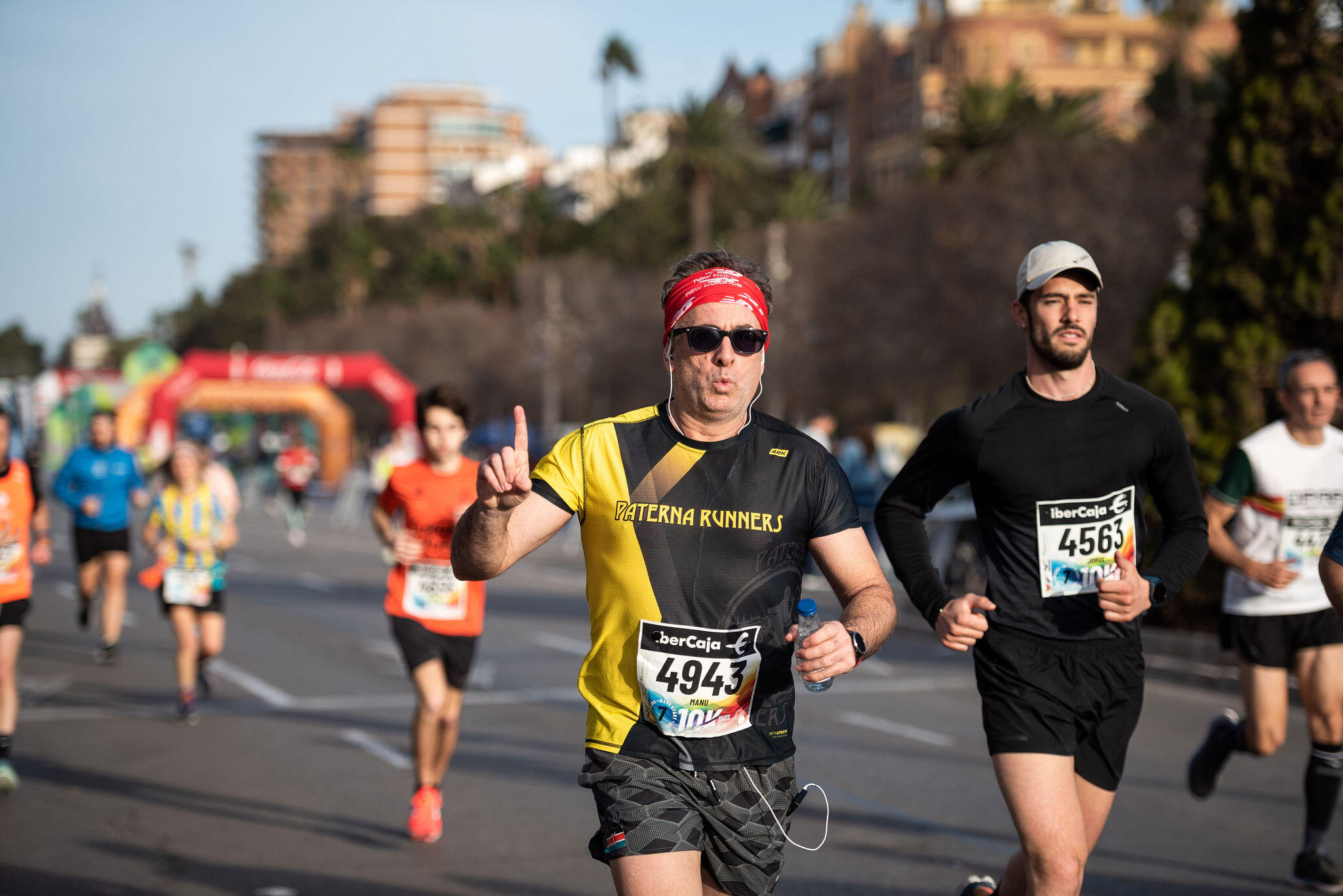
What do I mean by what's inside 'the toolbox'? I'm going to explain it with an example: person and a half on Saturday and Sunday; In person X's toolbox there is also the possibility of going to a gym for one or two days or doing a day of pool training...
With all that information, with everything I know is in person X's toolbox, I can design and build the most efficient training possible to address the sporting goal. That is why I say that for me the initial history of the person/athlete is essential to be able to properly adjust training days and workloads.
Yes, you have to train strength to prepare for a 10k
Is it important to incorporate strength training into preparation to debut in a 10K?
Absolutely yes. Strength is the basis of any physical preparation and it is important to prepare for a 10k. For someone who wants to face a 10k for the first time with the aim of finishing it with solvency but without pretensions of making a mark, specific work in the gym or with weights is not necessary, but a self loading work; This work could be with tires, TRX, on stairs, on slopes...
Strength work is necessary because it will allow train more, better assimilate training loads y reduce the risk of injury. And why do I say that it will allow you to train more? Well, because by doing strength work you can be more consistent in training and in the end the key in any endurance sport is perseverance and patience. The person who is constant, who does not skip or miss workouts, is the one who progresses.
In a 10k you take between 8.000 and 9.000 steps, which means supporting your body weight multiplied by 4 each time you step on the ground; If at the bone, muscle, tendon and ligament level you are not strong enough and prepared to withstand this enormous volume of impacts, discomfort and injuries may appear, and it will be of no use to wear very expensive shoes.
The most common mistake when debuting in a 10k: not keeping pace
What mistakes should you try to avoid when running a 10k for the first time?
The most common mistake of the beginner is usually getting carried away by the emotion of the race and not keeping track of the pace.
Act quickly. avoid going out at inappropriate paces because you end up paying for that after kilometer 7. You have to plan your pace from the start and run with a cool head at all times, but especially in the first kilometers.
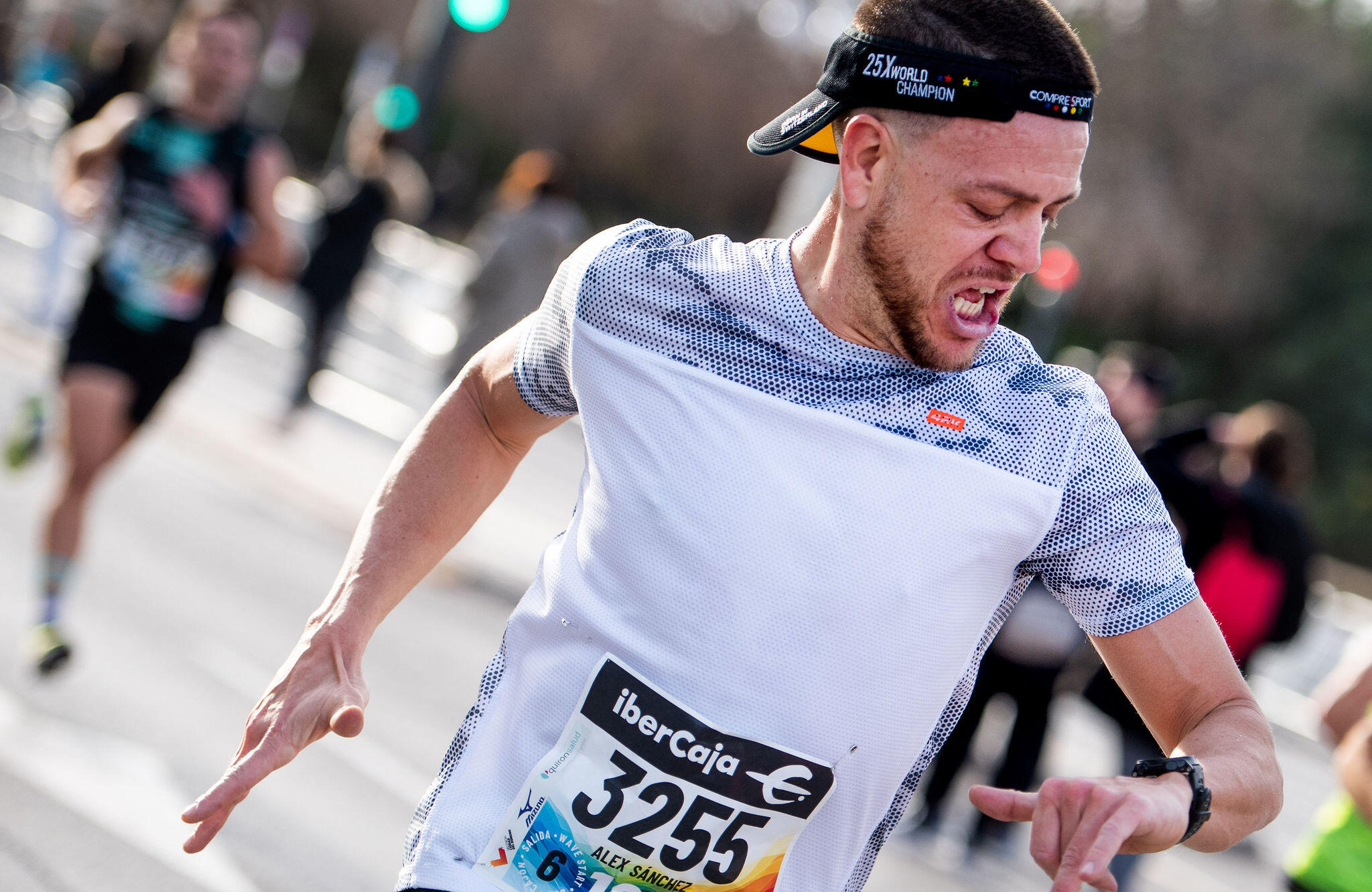
I always tell beginners in any distance, be it a 10k or a half marathon or a marathon, that you have to run at the rhythms or pulses that have been trained and assimilated. You should not overestimate yourself in the first kilometers no matter how good the sensations are; That feeling of believing that the bib number is going to give you that extra performance to run faster throughout the entire route is very treacherous.
Another indication that I always give to the runners I train is that the day before and the day of the race There is no need to do anything that has not been previously trained..
There is no need to do “experiments”. And on race day you don't have a different breakfast, you don't drink more coffee, you don't wear new clothes, much less shoes (which may sound like a joke, but I know of cases), you don't take an energy gel before the race because it's a recommendation from someone with a lot of experience, you don't drink something during the race that you haven't tried before...
On race day you don't have to do anything new; Everything that is done on race day has to be trained and assimilated prior to the race.
What would be important to be clear about before considering putting on a bib in a 10k?
The most important thing is to be clear that you want to run a race. There are many people who end up putting on a bib because of “pressure”. I know of cases of people who sign up because friends or family insist on doing so when they have been running for some time and they do it almost out of obligation.
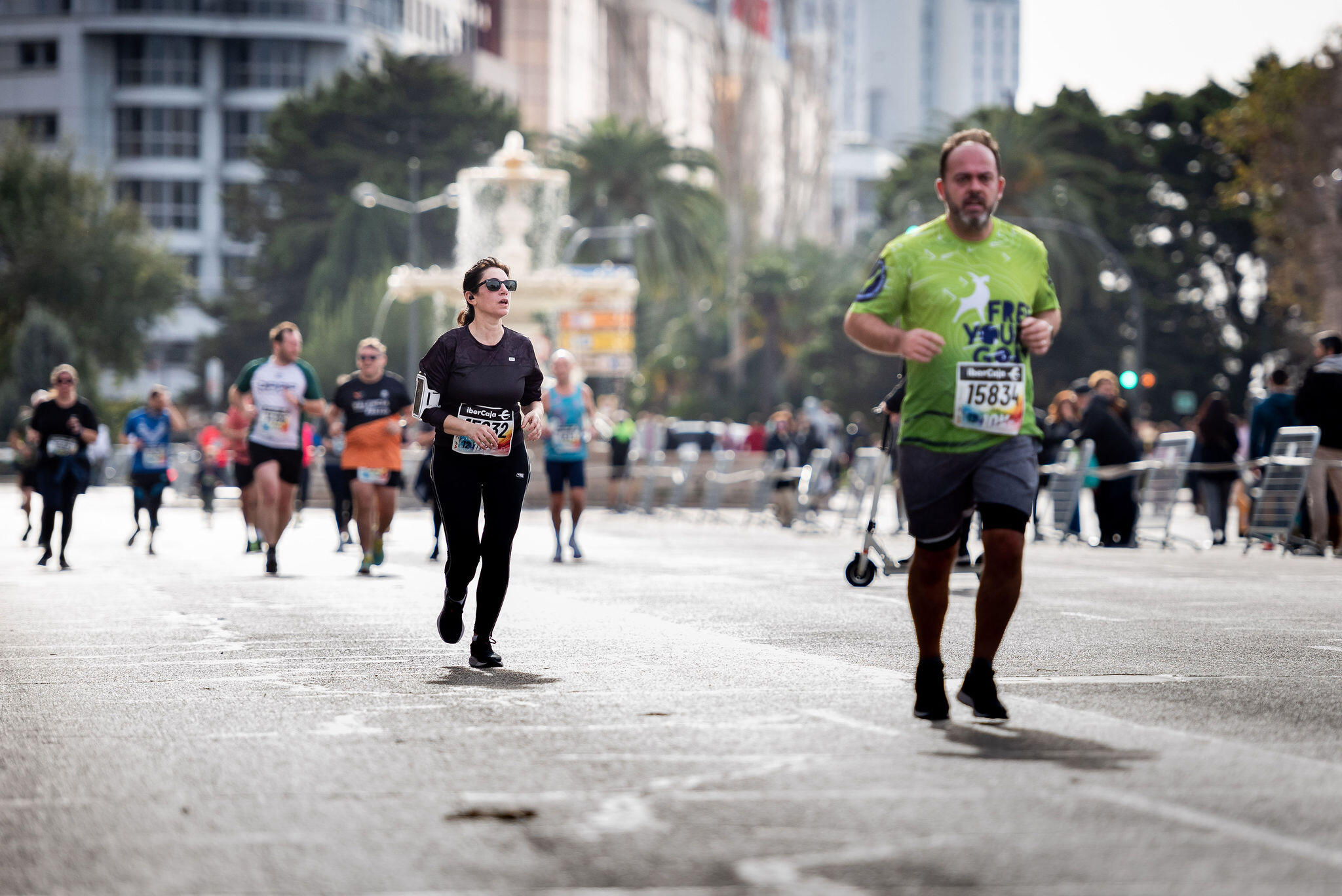
Facing a race, especially for the first time, generates stress that not everyone likes or enjoys. There are many people who like to run for health or for fun or to disconnect and who don't like to compete, and that's okay. Putting on a bib and facing a 10k is something you really have to look forward to. It is absolutely respectable that someone decides to run and has no interest in the competitive aspect.
Do you want to improve as a runner? Put yourself in the hands of professionals. To achieve sports goals, whether elite or popular, you must seek advice from someone who can really help you with judgment, seriousness and professionalism to improve as a runner in the section of training, preparation, nutrition, injury prevention and recovery... etc.
Internet and social reds have been a infinite amount of information available to anyone who is starting out in sports, information that can be very diverse: training, sports planning, nutrition advice, recommendations for injuries...
In many cases this information comes from serious sources, but has been provided in a generic manner, without taking into account the particular case of a specific person or patient. There is also information that comes from very unreliable sources and that should be ignored because in addition to not helping you improve as a runner, it can cause problems for you.
To improve as a runner you have to seek the right advice
We live in a time in which everyone has access to information at the click of a button and in which it is very fashionable to publish content on social reds about sports, nutrition, training... and, of course, physiotherapy.
Many professionals who have studied and achieved the corresponding degrees that accredit our knowledge and, therefore, the competence to offer quality services and advice to athletes, we witness with astonishment, disbelief, patience and, sometimes, indignation at the absurdity of finding, on a daily basis, on social reds people without qualifications or degrees pontificating on subjects about which they have little knowledge.
Some even profit from their advice, recommendations and advice based on knowledge that they do not prove (probably because they lack the required qualifications). Unfortunately, many of their clients are not aware of the risk they run by putting themselves in the hands of people who advise on training-preparation, injury recovery, nutrition or physiotherapy without training and without qualifications to prove their competence.
I am going to try to clarify which professionals can help you achieve your goals (and therefore improve as a runner) and which false professionals put your health at risk due to lack of preparation, lack of knowledge or desire for prominence.
In my opinion there are two basic rules to start dealing with this topic:
- Practicing a sport does not make you a professional specialist in it.. For example, no matter how good you are at playing soccer, you are not a coach; No matter how good you are at CrossFit, you are not a CrossFit coach; and, logically, no matter how good you are at running and no matter how good a time you have in the marathon or 10K, you are not a sports coach. running/athletics.
- The type articles… «7 definitive exercises to have iron legs» o «training to lose 50' in 10K» o "core training to be a better runner" that you find on the Internet or on social reds are not the ones that are going to be best for you (they may even harm you); They are articles written for other purposes (improve positioning, improve visibility, attract attention, gain followers...) but they are not really designed for you.
My advice is that you look for a true professional who is trained (and qualified, because that is a guarantee of having acquired knowledge), updated and, above all, who has experience in what you are looking for, be it training-preparation, nutrition or physiotherapy. If you really want to improve as a runner, don't put yourself in the hands of people

Without health there is no achievable goal
I frequently see people on social media offering information about physiotherapy or injury recovery (which is my professional specialty) without any criteria and, worst of all, without taking into account that giving inappropriate advice can lead to physical problems and even injuries. And injuries, I know from professional experience, destroy people's dreams and sporting aspirations. A phrase that I repeat ad nauseam with my patients and also when I teach classes is "without health there is no achievable goal".
With this article I intend to clarify the role of each of the professionals that you may encounter as a runner in your sporting activity (and to improve as a runner it is very important to be clear about this).
The first thing I want to make clear is that If you have an injury, you should go to a medical professional. to diagnose the injury; From there, I consider it very important to clarify the distribution of roles between physiotherapist, physical trainer and coach:
- Un physiotherapist trabaja so you can train.
- Un physical trainer trabaja so you can compete.
- Un coach trabaja so you can perform.
Are you a patient or client? An important difference
A very important aspect to keep in mind is to know if you are a patient or a client, what difference does it make? Well, very simple: if you are injured or need to prevent injuries In order to train, the professional you should turn to is a physiotherapist, because you are a patient. If you are healthy, you are a client and what you need is a degree in Physical Activity and Sports Sciences.
If you are a patient, you need a physiotherapist
The physiotherapist is the professional who is in charge of improving the injured structure while respecting the tissue healing process; In addition, it works on the sports rehabilitation of the injury or preventing it, based on physiotherapy tests that help ensure that you can train without pain or discomfort to give quality to the training of sports professionals, who are the physical trainers of yesteryear and who Now they are graduates in Physical Activity and Sports Sciences.
A physiotherapist accompanies the athlete when he is injured; and when he is not injured, the physiotherapist can help him prevent with exercises evaluated through functional physiotherapy tests, for example with the Valobando App (you can learn more about what it consists of in the article «The importance of the sports physiotherapist»), generating specific work for the athlete with a health objective, since they are health professionals.
A physiotherapist can make a physiotherapy diagnosis, which, together with a previous medical diagnosis, serves to design recovery work and also serves to avoid relapses.
If you are not injured, you are a 'client' and need a degree in Physical Activity and Sports Sciences
The graduate in Physical Education or currently the Degree in Physical Activity and Sports Sciences is the professional who is in charge of preparing the runner who is healthy (not injured) to compete. If you are not injured, you are not a patient, but a client with a competition goal in mind.
The graduate in Physical Activity and Sports Sciences is the professional who is in charge of, once your physical qualities have been evaluated, preparing you so that you can compete to the maximum and improve as a runner; he is in charge «to look for your best version», which is an expression that is very fashionable now. To improve as a runner, it is essential to have the advice of an expert in physical preparation to be able to get the best out of your physical qualities.
Furthermore, a graduate in Physical Activity and Sports Sciences who is specialized in high performance in endurance sports is the one who can best guide you in planning training to achieve a specific goal.
Now, can a physical trainer readapt an injury? And a second question: can you train a patient with an injury?
The answer to the first question is a resounding NO because it has not been trained for it; Doing so would be a clear example of work intrusion, in addition to putting the 'patient's' health at risk, because a runner who requires rehabilitation due to an injury is a patient and not a client (which is why I previously made the distinction between patient and client).
The answer to the second question is more complicated, but I will try to clarify it: a patient (a runner with an injury) must be supervised by a physiotherapist in the stretcher and readaptation phase to the sport, but is not exempt from working on the physical qualities that your sport requires and that is the part in which the Physical Activity and Sports Sciences technician intervenes, but always under the supervision and tutelage of a physiotherapist.

The physiotherapist and the degree in Physical Activity and Sports Sciences go hand in hand in the training and recovery process of an athlete. It is a professional tandem that can really help anyone interested in that goal improve as a runner.
Once the runner has recovered from the injury, the person in charge of directing the training process is the graduate in Physical Activity and Sports Sciences, but the physiotherapist is obliged to generate the correct situation to that the athlete does not get injured and can train to the maximum with his coach.
At this point I would like to talk about other professional profiles (for some of them it would be more appropriate to talk about 'pseudo professionals'), especially because in recent years they have proliferated on social reds giving all kinds of advice to runners (preparation, nutrition, training, injury prevention, injury treatment, health advice...) and, honestly, I think that many of them cannot help you improve as a runner.
- Massage therapist. Person who has studied a course on how to give massages, but cannot treat pathologies because they have a very poor knowledge of anatomy. You have ‘customers’; You can go to it simply to release muscle tension, but not if you have an injury or pathology.
- Chiropractor. The chiropractic It is based on practices and beliefs that are considered pseudoscience. They are dangerous because with little training in anatomy they manipulate vertebral joints and that can pose risks to people's health.
- Monitor. There are two kinds:
- Room Monitor or Personal Trainer. Normally it is a Higher Technician in Physical and Sports Activities (TAFAD), a Vocational Training qualification that is included within the branch of Sports; They train for two years, but logically they do not have the knowledge of a degree in Physical Activity and Sports Sciences. It is a hybrid between the professional who wants to get the most out of you and get you in shape. There are also 3-month courses, it is a course with little training and low quality.
- Monitor of disciplines such as Pilates, yoga, boxing, swimming, paddle tennis, tennis, etc., they are professionals in activities specialized in a method or sport.
- Druid, shaman, brujo, neighbor with powers, friend who reads hands… They are people who help spiritually and really only help those who believe in superstitions.
- Acupuncturist. Person who inserts needles to perform acupuncture treatments; Not to be confused with physiotherapists or doctors trained in traditional Chinese medicine.
- Expert in nothing and everything. This is a dangerous profile: his sporting experience is all his knowledge and he believes that this qualifies him to coach others. Unfortunately, I have had several examples in my clinic of runners injured by following the advice of that friend. "who has been running for many years and has won several popular races", which is why he considers that he can serve as a coach for anyone.
- Youtuber, content creator, influencer… This is a profile that has grown on social reds and that, in my opinion, has every right in the world to generate content as long as it does not delve into professional fields that have to do with health, and for me health It is nutrition, training, physical preparation, injury recovery, physiotherapy...
In conclusion, I believe that health must be taken very seriously. In general, most true professionals are respectful of their areas of action. Specialization is essential to provide health guarantees to athletes. A physiotherapist cannot delve into the terrain, for example, of a podiatrist, in the same way that a traumatologist cannot act as a nutritionist or a physical trainer cannot determine how recovery from an injury should be done.
- Capacity: 13 liters.
- Composition: 210D Polyester.
- Sizes: 33cm x 42cm.
- Reinforcements on the eyelets.
- Logo 42K+++
The days before a marathon can be very stressful, especially for runners who are making their debut in the distance. In this article I am going to give you 10 tips for your first marathon, Especially for the days before and for the day of the race.
Preparing for a marathon requires a good training plan; a training plan adapted to the objective pursued in the race, previous experience in marathon distance, state of form, age... There are many factors that can be important when determining the most appropriate preparation to face a marathon with guarantees.
We are going to assume that you have completed the preparation and that, therefore, you arrive with your homework done in the days prior to your big date with the 42,195 kilometers. Behind you have left months of training, sacrifice and effort. The day for which your legs have traveled hundreds of kilometers is approaching, the day that seemed far away in time and that now you see so close.
You must be optimistic and think that all the hours and all the kilometers of effort and dedication are going to pay off, but It is important that you do not make last minute mistakes (in the last days and on the day of the race) that could compromise the work done for months. Below I am going to list 10 tips for your first marathon that will help you avoid making mistakes.
The first of the tips for your first marathon: rest and disconnect the days before
In the days before the marathon you should try don't stress your body anymore and give priority to rest and disconnection.
If you have been rigorous and constant with the preparation, you have to be confident and seek peace of mind. It is the time of Tapering or set-up. You have to change the “I have to get up to train” by “I have to sleep more”; forget the gym and visit the physio to give you a muscle relief massage on your legs; Dedicate time to family or leisure and don't think about training anymore.
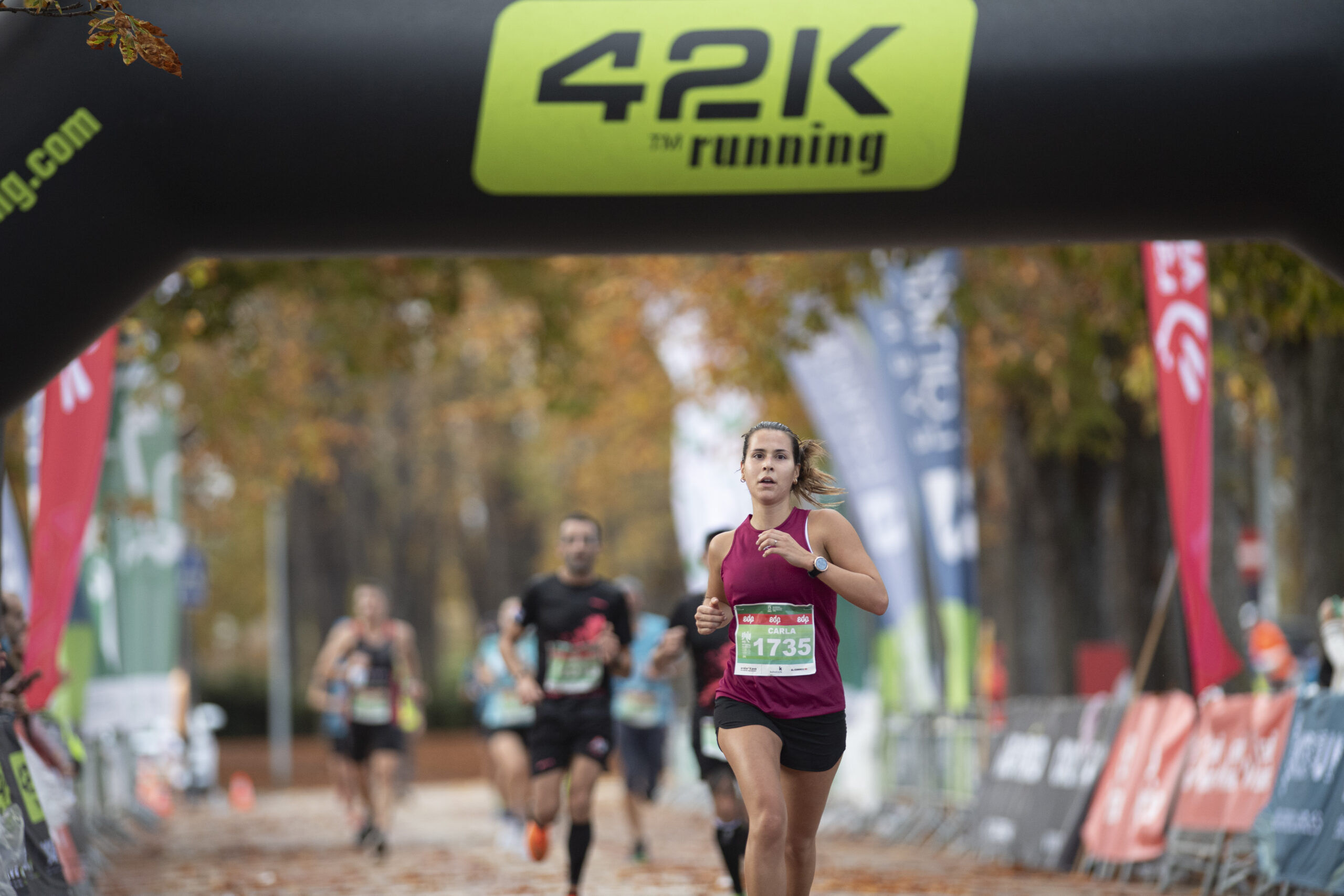
Every runner wants to arrive in the best possible performance conditions on the big day and to help you I offer you 10 tips for your first marathon. These tips for the days before and on the day of the race are valid for any runner, also for beginners:
- Don't train anymore.
- Study the weather forecast.
- Avoid staying cold on the way out.
- If you can, train at the same time as the test.
- Avoid excessive carbohydrate loads the days before.
- Eat and drink what you have trained.
- Follow the rhythms you have planned and trained.
- On race day nothing is improvised and nothing is released.
- Pay attention to small details.
- Your fans must wait for you in the final ten kilometers.
Don't add last minute training
1. Do not train more than planned by your coach. The sessions, competitions, lengths or series that you did not do are already behind you and it is not the time to recover them. Don't think about what you “could have done.” In the week before, additional training will not make you perform more or better on the day of the marathon; however, one session less may do the trick. The really important thing now, when you are just a few days away from the big date, is to arrive rested at the start. Trust what you have trained!
2. Check the weather forecast and temperature in the city where you are going to run. It is important that you know what the average temperature is at the start time and what temperature it will reach during the race (in the Valencia marathon, for example, in the month of December the average temperature at the start is 9º). -13º, reaching 17º-20º maximum). It is also advisable that you take into account the relative humidity or if there is a forecast of rain to avoid surprises.
The humidity thing is not nonsense because for a person used to training in a dry climate it can be a significant handicap to run a marathon in a more humid city or region since it will require a special hydration strategy. I'll give you a concrete example: if you live in a dry region and decide to run the Valencia marathon, which is a city with an average relative humidity of 60%-63%, I recommend that you raise your hydration levels 2-3 days before the race at 2-3 liters per day.

3. Avoid staying cold on the way out. Don't forget some clothing to keep you warm until the moment you start or until you have warmed up a few kilometers after starting to run. There are races in which it is possible to get rid of these clothes at the start or even later and that have a charitable purpose, as the organization of the Valencia marathon does, which collects all these clothes and donates them to an NGO.
4. Train at the same time as the marathon. If possible, it is recommended that you train at the same time that you are going to have to run on race day. Our body is like a “repetition machine”, capable of adapting and memorizing any routine. If due to personal or work circumstances you cannot train at the time of the test, go out for a light jog of between 20 and 30 minutes the day before the race, at a time similar to the start of the test; This way you will get your body activated the next day without problems.
5. Avoid excessive carbohydrate loads in the previous days. The belief is too widespread that it is essential to gorge on carbohydrates 48 hours before running a marathon. My advice is to avoid excessive and uncritical 'carbohydrate loads' in the days before. It has been shown that these diets are not as effective as was believed and that can cause gastrointestinal problems to many runners and runners.
Start race day with your regular breakfast (not a breakfast with “extras” for the race) and do not leave your stomach empty until 90 minutes before to start running. Bring something to eat and drink until there are 90 minutes left before departure and this way you will avoid feeling hungry or feeling 'empty' or 'lacking strength'.

On race day don't improvise with the alimentation, hydration or rhythm
6. Eat and drink what you have trained. One of the most important tips I can give you for your first marathon is to
the day of the race you don't have to improvise with thelimentation and hydration. Repeat the supplies you have rehearsed in training; stick to what you know has worked well for you in training and don't make last minute changes. The marathon is a race that is very tiring and pushes you to the limit, so you cannot allow yourself "experiments" that you do not know how they will affect your performance.
Something that I consider important to note is that many marathons have a sports hydration/nutrition brand as a sponsor or collaborator and they offer their products at the aid stations. Find out what that company is and try if those products work well for you, if you intend to use them in the race. Otherwise, continue with your personal supplies and do not eat or drink more or less than what you have planned, trained and assimilated.
It is quite common to want to eat more than necessary hoping to perform better or, on the contrary, not reach the recommended intake due to the nerves and anxiety generated by the marathon. Eat when you are not hungry and drink before thirst appears It is the key to not having energy and/or hydration problems.
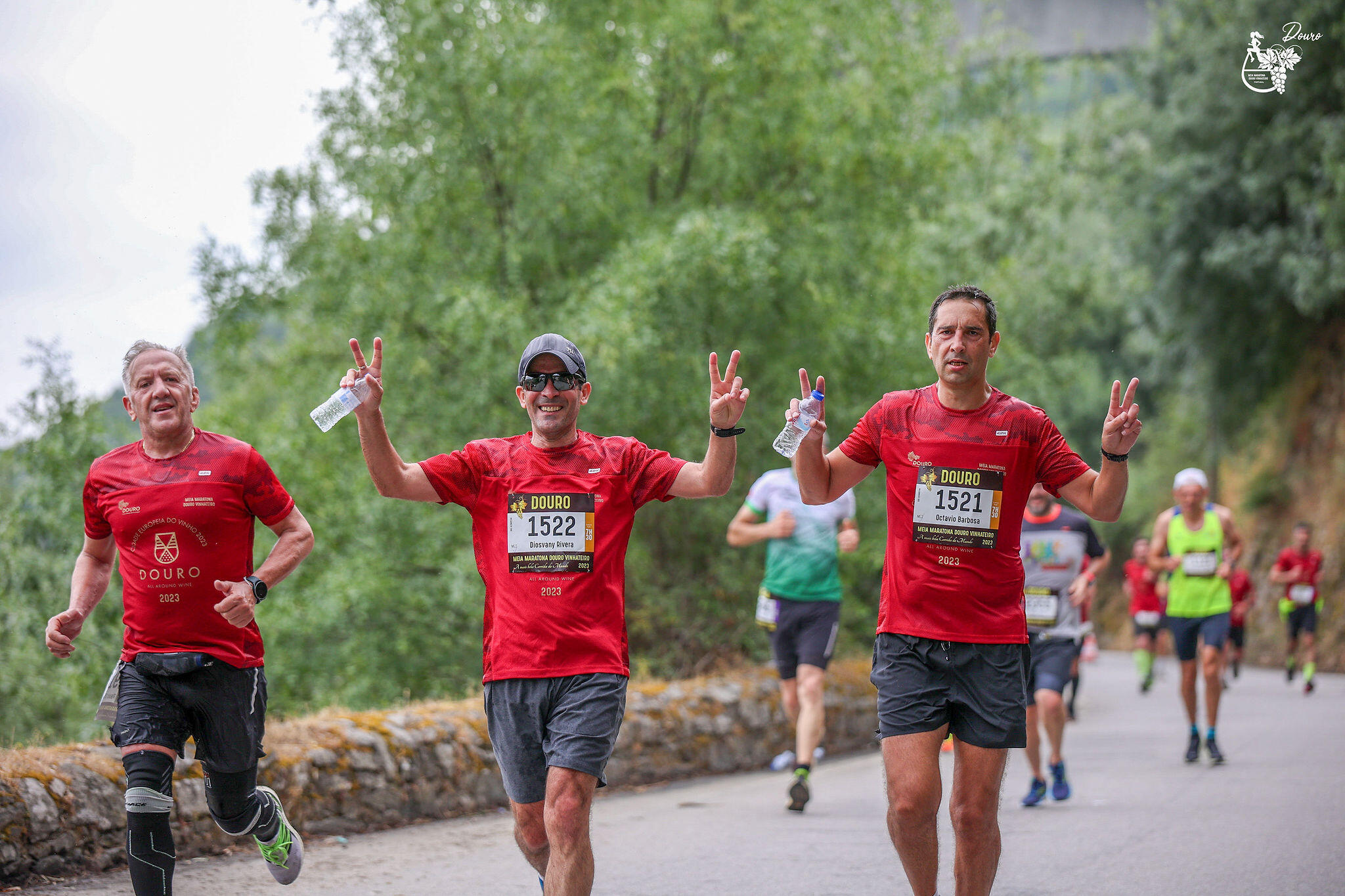
The marathon begins when crossing the starting arch, not at Km30
7. It is ESSENTIAL to follow the planned and trained rhythms and/or heart rate. You are facing a race of several hours, so you have to think that the sensations you have at kilometer 5 may be very different from those at kilometer 25. Try to be very rigorous in monitoring your rhythms and/or heart rate. planned and trained for the race; Do not get carried away by the pace of other runners because the race is very long and you will lose control (relative) of fatigue.
Among the tips for your first marathon, I also consider it important to tell you that you have the very cold head in the first kilometers of the race to avoid sudden changes in pace that usually occur in the first 3-4 kilometers. Those sudden changes of pace can wear you down more than you imagine and take their toll on you in the end. Focus on running at the pace you have planned from the start and don't mind being passed by other participants on the right or left; you have to do your race from start to finish.
It is a very common mistake in the first kilometers to run at a faster pace than expected, either due to nervousness, the excitement of the marathon, or the effect of the tapering, etc. These excesses, once the race is advanced, can cause a situation of excessive exhaustion with many kilometers to go. This state is not reversible and there is no other alternative than to lower the intensity and not lose focus on arrival.
The marathon does not start at Km30, as they say; What you do from Km1 already conditions everything that will happen later. The marathon begins when you pass through the starting arch: keep this idea as one of the main tips for your first marathon.
8. Don't improvise or try anything new. Don't experience race day! This is one of the most important pieces of advice for your first marathon that I can give you and you will surely have heard it from all the trainers or coaches in the world.
the day of the race You should NOT wear brand new sneakers, socks, pants, t-shirt... Of course, You should NOT try new isotonic and/or energy drinks; Don't try any radical diets in the last few days (even if so-and-so or so-and-so did wonderfully in a previous marathon).
Another piece of advice for your first marathon that I consider necessary to highlight is the importance of not doing training with new teammates the week before the race (I have seen this many times in my years as a trainer). Absolutely everything must be tested at least 15 days before.
Tips for your first marathon, practical aspects of great importance
9. Pay attention to the small (big) details. Among the tips for your first marathon I also find it interesting to point out practical aspects which may seem of little importance but they have a lot of importance in a 42 kilometer race.
To begin with, pay attention to your feet and take care of them during the week before the race. As a first measure, I would tell you that the days before the race, wear comfortable shoes to avoid chafing or blisters that could bother you on the day of the marathon. If you have to cut the nails, let it be four or five days before the race (never the day before). And he also thinks about the scratches; If you are prone to it, you can use Vaseline but only on the specific areas of the foot where friction is generated (do not abuse Vaseline on your feet or other parts of the body because it is not absorbed and can cause increased sweating).
More tips for your first marathon: anticipates any inclement weather, prepare everything in time the day before and don't leave things for the last minute (such as placing your number, preparing your supplies or preparing the clothes you are going to run in), go ahead and get your number (if it is the same day as the race), avoid stressful situations and use Vaseline sparingly for critical chafing points (armpits, groin...).
Lastly, Don't worry if you can't sleep the night before (it is very common and does not only happen to beginner runners), since the important rest is a night's sleep 48 hours before.
10. Ask your "supporters" to wait for you after Km32. Up to Km25 the marathon is “easy”. From Km25 to Km32 you will face the hardest part on a physical level. From Km32 onwards the countdown and the psychological marathon begin. If you have supporters individuals (family, friends, club mates...), ask them to be within the last 9-10 kilometers to give you the necessary moral support. The applause and encouragement from familiar faces along with the visualization of reaching the finish line will push you to success, for sure.
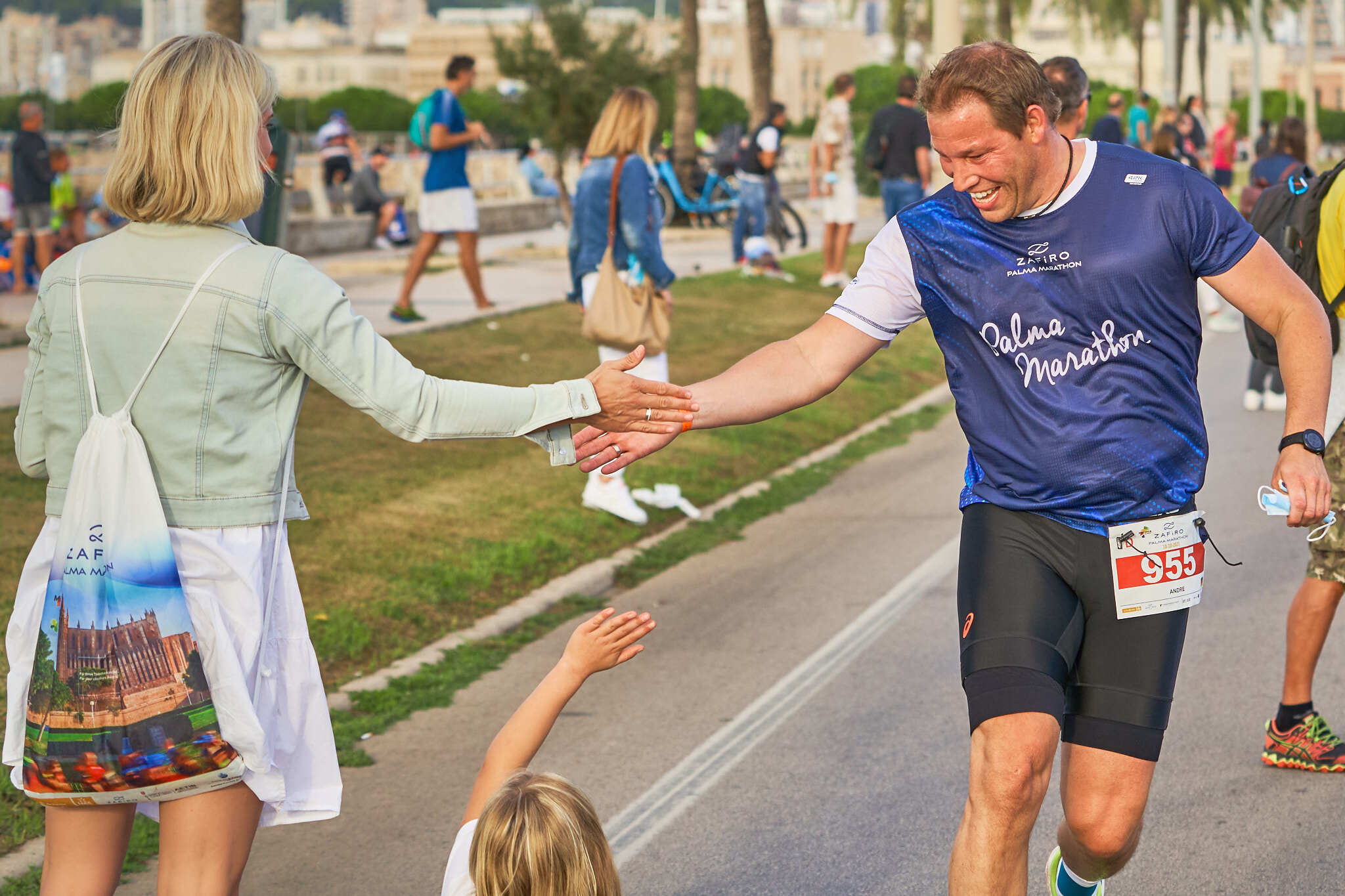
I hope these 10 tips for your first marathon are useful to you.

Health and kilometers!!!!
The COO (Chief Operating Officer) of 42KJulio Mas, was one of the more than twenty thousand runners who competed in the Athens Marathon on November 12 and has told us in first person about his experience in the oldest and also the most legendary marathon in the world.
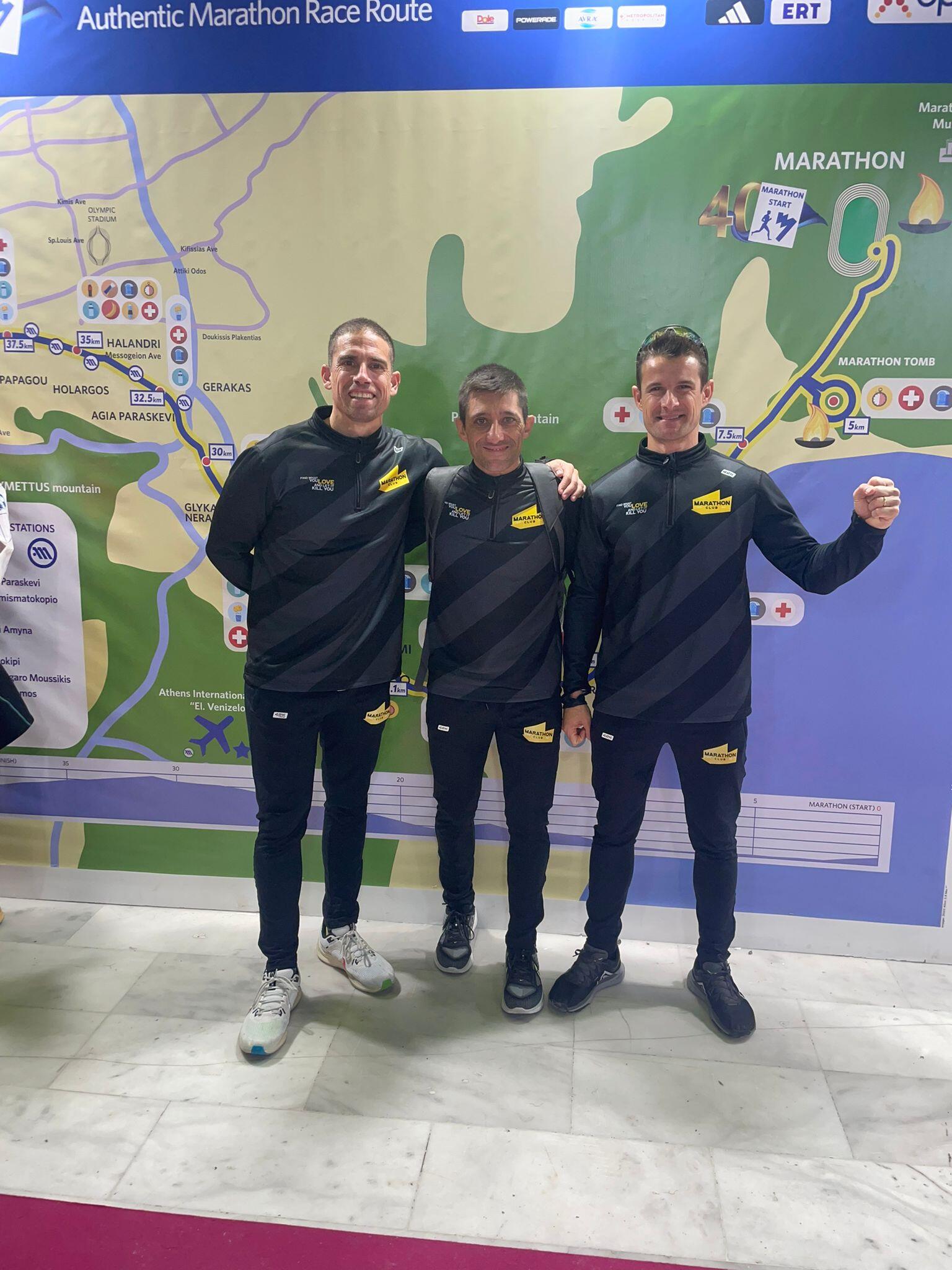
I started running about 30 years ago, at a time when the word “” was not used.running”, when at the start of any marathon in Spain there were no more than a thousand runners (and very few women) and when running through any city attracted attention and attracted looks of surprise and strangeness.
I have lost count of the races in which I have defended a number (I do not forget the first, the Volta a Peu València, when I was 14 years old), but I remember each of the marathons that I have run because I have put my soul into all of them.
The marathon is a unique test and I have always believed that it must be run with enormous respect and that, in my opinion, means doing it with the maximum personal ambition and with the determination to exhaust every last gram of strength.
I have completed the 42,195 kilometers 14 times and, fortunately, I have only experienced the disappointment and ingratitude of withdrawal once, in Seville (2014), although that is also part of the greatness of this test. Preparing for a marathon means training for months knowing that On race day you risk everything on one card and you are never safe from an injury, a fall, a stomach problem...
Competing in the Athens marathon, a dream come true after 30 years of running
I made my marathon debut in 2005, in Valencia. Since then this career has been part of my sporting life and also, to a large extent, of my professional life as commercial director of 42K, since our sportswear brand has been and is the technical brand of countless marathons in Spain, Italy, Ireland, Portugal, France...
I have been lucky enough to experience the marathon as a runner in wonderful settings: Valencia (eight times), Barcelona (twice), Paris, Rome and Stockholm. But ever since I fell in love with the marathon, I dreamed of one day competing in the legendary Athens Marathon.

After many years cherishing that dream, finally in 2023 I was able to be at the start of the town of Marathon to face the most historic, the most mythical and, without a doubt, the hardest of the great marathons. I'll tell you my experience in it. 40th Athens Marathon and I encourage you to one day experience firsthand the indescribable sensation of glory that is felt when crossing the finish line at the Panathenaic Stadium in Athens.
Athens Marathon, a unique atmosphere
The Athens Marathon It has the weight of history and legend behind it, something that is felt in the atmosphere that exists in the Greek capital in the days before the race. When you exchange glances with other runners in the most touristic places in the city, you realize that you share a mixture of excitement and nervousness, which is logically the result of knowing that you are in a mythical place and that you are going to face a unique marathon.

Athens turns to the marathon and you can breathe marathons throughout the city. It is their big sporting event of the year and they pamper it in a special way. The percentage of foreign participation is very high and that translates into enormous economic income for hotels, restaurants, commerce...
The Athenians experience the celebration of the race with joy and tremendous pride. They feel very lucky to be the origin of the authentic marathon; They like to breastfeed and remember that they are the classic marathon cradle, 'the authentic', as it appears on all the official posters and advertising of the event, and is even engraved on the finisher's medal (see in the photo).
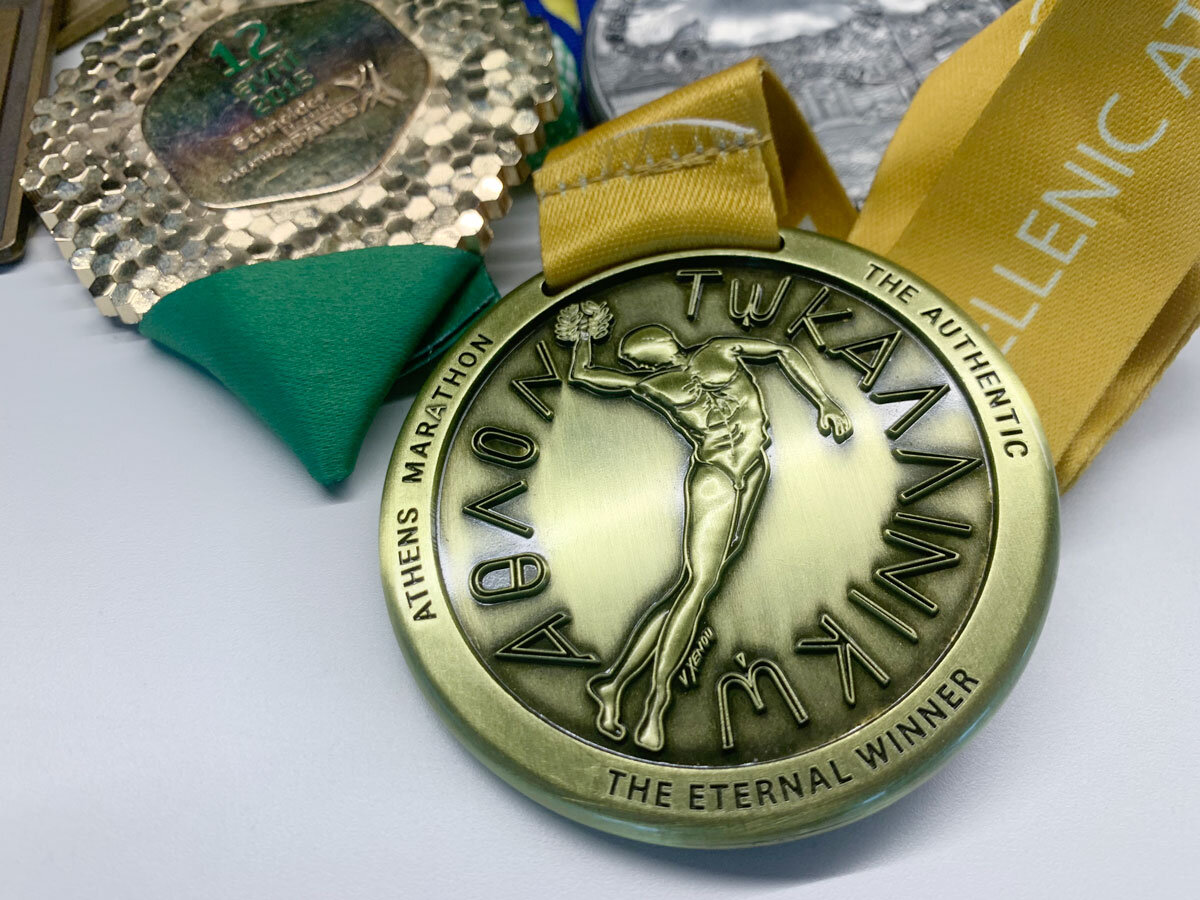
El first Olympic marathon was held in 1896 (one year before the Boston Marathon) on the occasion of the celebration in athens of the first modern Olympic Games.
History tells us that Pierre de Coubertin, who was the creator of the modern Olympic Games with the idea of remembering the Olympic Games of antiquity (held between 776 BC and 393 AD), received the suggestion of doing a long-distance race inspired by legend of the warrior-messenger Pheidippides, who ran from Marathon to Athens to report, just before he died, that the Greeks had defeated the invading Persian army at the Battle of Marathon.
The great atmosphere that exists in Athens is transferred to the spectacular runner's fair that celebrates the test. I have been to numerous important marathon runner fairs and I can assure you that the Athens marathon is one of the ones that impressed me the most. It installs at the Faliro Sports Complex, a grand sports facility that hosted the handball, taekwondo and volleyball competitions during the 2004 Olympic Games.
It is a fair in which you can spend hours and hours visiting stands of countless sports brands of clothing, accessories, gadgets... and in which many other marathons are also exhibited to attract participants, aware of the very high percentage of runners from all corners. of the world that meet in Athens.

An amazing and impeccable organization
Race day starts with a important early morning. You have to set the alarm very early to catch any of the hundreds of buses that take you to the starting line.
The device of hundreds and hundreds of buses that Twenty-something thousand runners are transferred from Athens but also departure in the town Marathon (marathon is the Greek word for fennel, a plant that was abundant in the area), which is found about 40 kilometers (the distance that according to legend Pheidippides traveled in the opposite direction).
From 5:30 in the morning the streets of Athens are abuzz with people and buses. It's a mammoth deployment of buses, perfectly distributed throughout different areas of Athens and with previously established departure times.
I have worked in race organization and I know the difficulties involved in organizing an event for more than twenty thousand people. It is very difficult to imagine the extraordinary complexity of organizing the bus journey from Athens to Marathon for more than twenty thousand people and doing it with such professionalism and in such a fluid manner.
I must admit that I did not expect to find a career with such a professional and efficient organizational level; all, absolutely everythingIs perfectly organized so that around 7 in the morning, two hours before departure, all participants are already in the town of Marathon.
Another example of perfect organization is the wardrobe that is installed at the exit. A huge team of people from the organization is in charge of collecting the bags and backpacks from the participants and they are immediately transported by trucks to the finish line in Athens, where a multitude of volunteers classify them by number to facilitate collection after the test.
The Marathon start, a moment of great emotion, excitement and nerves
We arrived at the town of Marathon at 7 in the morning and there are still two hours until departure. He atmosphere in Marathon It is spectacular: a mix of emotion, excitement and nerves. And that feeling increases as the departure time approaches. There is hardly any audience, but it is not missed because the animation of the test is responsible for generating enormous expectation and creating an atmosphere of great emotion.
I had the opportunity to talk to runners of different nationalities who were also making their debut in the race, most of them with many marathons under their belts, and all of them admitted feeling a special emotion, a mix of feelings that they had not experienced at the start of other big marathons.
When the time of departure is close, the organization's animation does not stop encouraging the participants. The moments before departure make your hair stand on end.
A unique route due to its hardness and demand
I had thoroughly studied the route and knew that I was facing a complicated and very demanding route. So it was. Without a doubt, it has been the hardest marathon I have ever run.
The first 10 kilometers are flat and they are completed easily, but from there the real Athens marathon begins. I remember going from the start behind two Greek runners who, upon reaching kilometer 10, high-fived each other and wished each other luck; They knew, probably because they were not beginners like me, at what exact moment they had to start gritting their teeth to face the race.
When you leave kilometer 10 behind, the road heads towards the sky. Until kilometer 31 the terrain is constantly ascending, with the occasional short section of descent that deceptively allows you to recover (keep a rhythm or a controlled pulse becomes impossible task). There are five thousand especially hard, from the 26th to the 31st, with very demanding ramps that require correct dosage of forces because it is very easy to make the mistake of forcing and pay dearly for it later.
From kilometer 32 the tour is softens because the descent towards Athens begins, but the difficulties are not over. To face the descent you have to be very strong quadriceps because otherwise you can have a very bad time in the last ten kilometers.
Between 34 and 36, you begin to notice very significant muscle fatigue, which is the result of so many kilometers of climbing and the change of support when running that requires you to make the descent. At that point in the race is when you are very grateful for having done specific strength work for this test.
The last kilometers can be tortuous, very tortuous, without adequate muscle preparation. At the Athens marathon the famous wall may be higher and more dangerous than in any other 42 kilometer race.
The Athens Marathon requires special preparation
The route approaches the 400 meters of accumulated positive slope and 80% of that climb is concentrated between kilometers 10 and 31. It is a marathon in which it's very difficult to pick up the pace, except in the first ten kilometers. There are sections of the route with very hard ramps that require a special level of physical and psychological preparation.
In my opinion, the Athens marathon It cannot be faced with the same preparation strategy as for a flat marathon. like, for example, Valencia or Seville. Without a doubt, you have to arrive with a very significant volume of kilometers in your legs, but I dare say that it may not be enough to be guaranteed of crossing the finish line in Athens. This race requires special muscle strength preparation and also extensive previous experience in marathon distance.
Without very well-planned strength work focused on the hardness of this race, the Athens marathon cannot be tackled safely. If you have any muscular weakness, it can be very difficult to finish.
Emotion overflows upon arrival at the Panathenaic Stadium in Athens
If I had to stay with an indelible memory of the Athens marathon, is without a doubt The entrance to the Panathenaic Stadium in Athens.
At kilometer 42 there is a curve that places you in front of the entrance straight to the stadium. At that moment the senses are not able to process everything you see and hear. The emotion overflows. Suddenly you see yourself running inside the most legendary stadium in sport. The stands are very high and are full of people applauding, cheering, shouting... You look up and feel overwhelmed with the spectacle. It doesn't matter how you imagined that moment: reality exceeds any expectations.
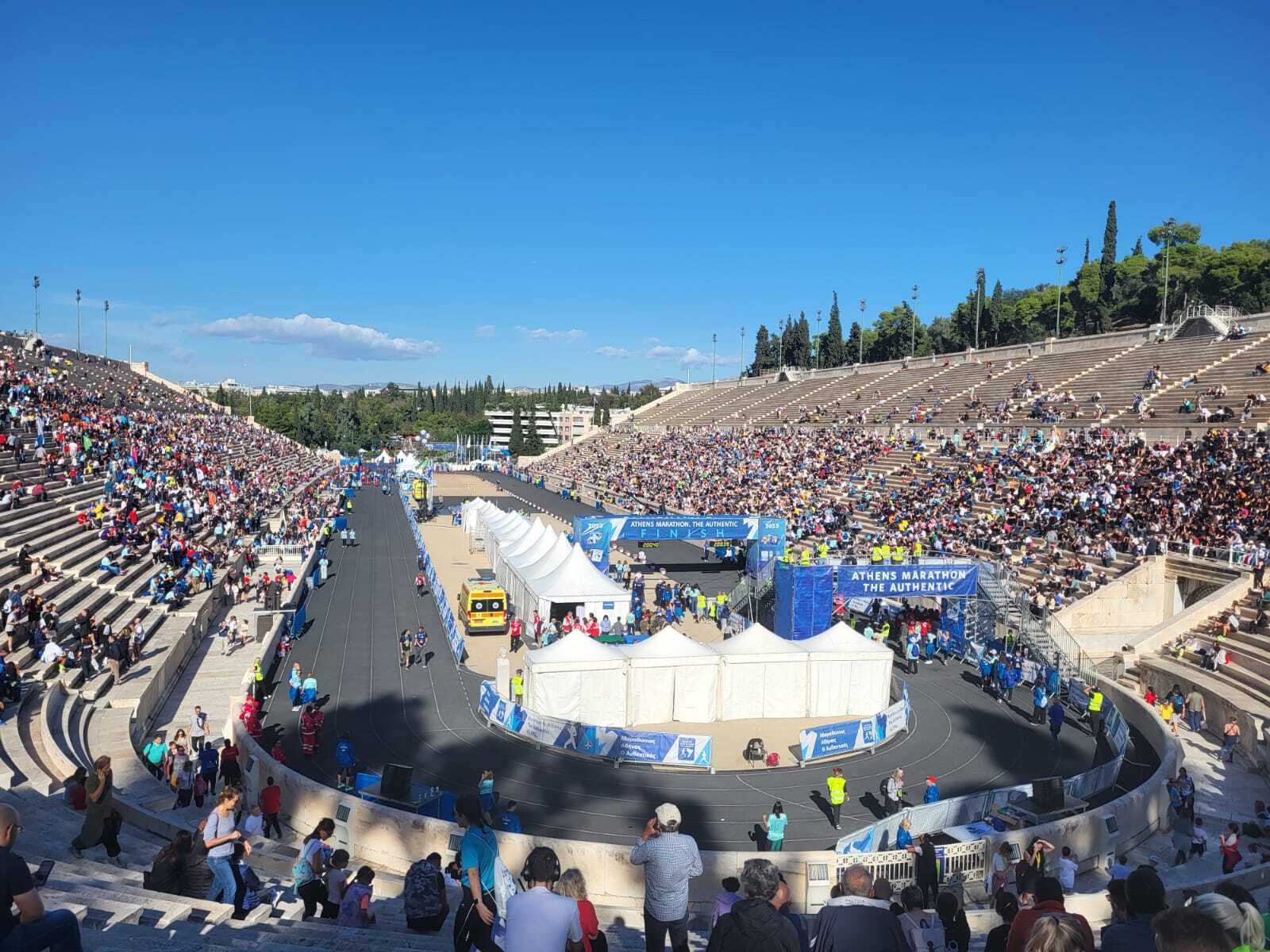
Panathenaic Stadium also known as the Kallimarmaro (what in Greek means "beautiful marble" because it is built with white marble), in 1896 it hosted the first edition of the Modern Olympic Games after having been rebuilt on the remains of an ancient stadium dating back to 329 BC
It is located in the center of Athens and is reached after a journey of about 2 incredible kilometers through the streets of the city. The number of people waiting in Athens for the arrival of the participants is incalculable. The emotion felt in those two kilometers neutralizes any feeling of tiredness, any discomfort. Everything you have suffered is compensated. Is the warmth of the Athenian public is impressive and how they encourage you to fly you to the entrance to the stadium.
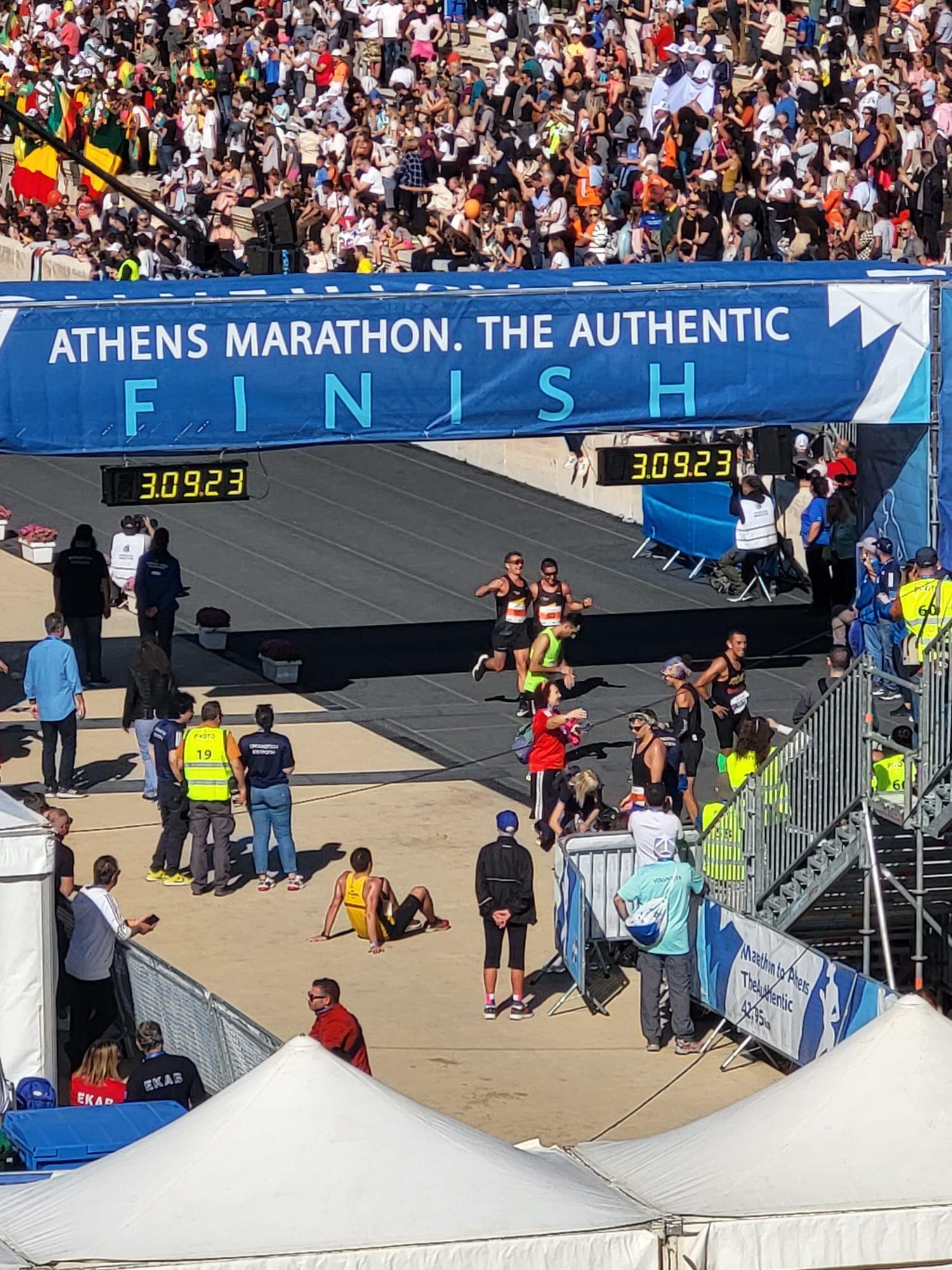
Athens is a marathon different from the rest of the big marathons
The Athens Marathon It is different from the rest of the big marathons in many things. Has numerous features that make it unique and some of them, in my opinion, reinforce their uniqueness and authenticity.
A priori it may seem less attractive because it has a series of “drawbacks” that do not occur in other large marathons: the huge early morning on race day, trip of almost an hour to Marathon, a tour with more than 20 kilometers of ascending terrain (the longest uphill hill in a marathon race) or run without an audience for most of the race.
In any large marathon, the presence of the public throughout the entire route is common, but in the Athens marathon this is not the case. There is an audience at the beginning, at the start of Marathon, but as soon as you leave this town and head towards Athens the race runs along a kind of national highway without public, except when passing through towns like Nea Makri, Rafina, Pikermi... in which all the inhabitants take to the streets to cheer with great enthusiasm, offering olive twigs as a way of wishing good luck, dancing Shirtaki, which is the Greek popular dance par excellence …
The public concentrates in the towns through which the race passes and at the end, in Athens, but there are almost 80 percent of the route in which one runs without public. Perhaps that may seem strange or be an inconvenience for someone used to running marathons with animation at every kilometer and with the presence of the public throughout the route; It seems to me that running alone for so many kilometers gives this race a special appeal.
The Athens Marathon forces you to face the true loneliness of the marathon runner, the famous distance runner loneliness. The marathon is a sporting event that requires mental strength and in a course like the Athens Marathon you test your mental strength like in no other marathon, at least like in no other that I have run.
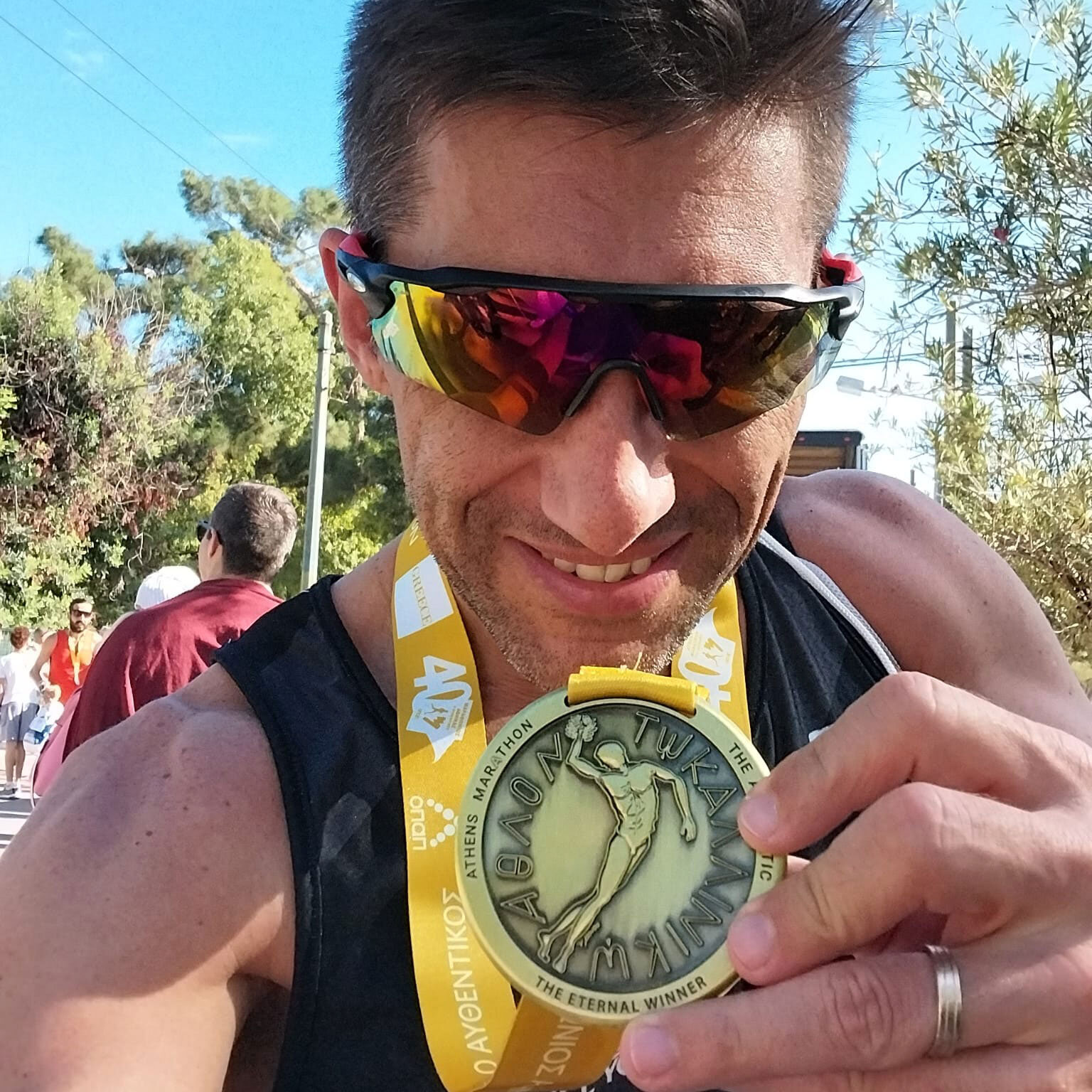
The times of Abel Antón and Martín Fiz in the 1997 World Cup, a feat
After having run the Athens marathon and having suffered its hardness and demands, I consider the times set by Abel Antón and Martín Fiz in the 1997 Athens World Championships a true feat, 2h 13m 16s and 2h 13m 21s, when they became champion and runner-up of the marathon world.
The records of Antón and Fiz in that world cup they are amazing. When you know the route you give much more value to what they did. It is a brutally demanding leg-breaking route. It seems almost science fiction to me to think about running at such high paces on a route like the Athens Marathon.
In all my participations in marathons I had managed to be sub 3 hours (except in Stockholm in 2018) and with that ambition I started the Marathon, but the race put me in my place. In the end I stopped the clock at 3h 09m, a time that I celebrate with the same enthusiasm as any of my best times (2h37m and 2h42m in Valencia 2013 and Valencia 2012, respectively).
I have fulfilled a dream. I have crossed off what has always been the marathon par excellence for me from my bucket list. I have lived the most exciting finish line of my life and i have accompanied by two great friends, Borja and Carles, to whom I am united by many races and many kilometers run, but from now on, we are also united by having lived together the experience of the great Athens marathon, the authentic one.
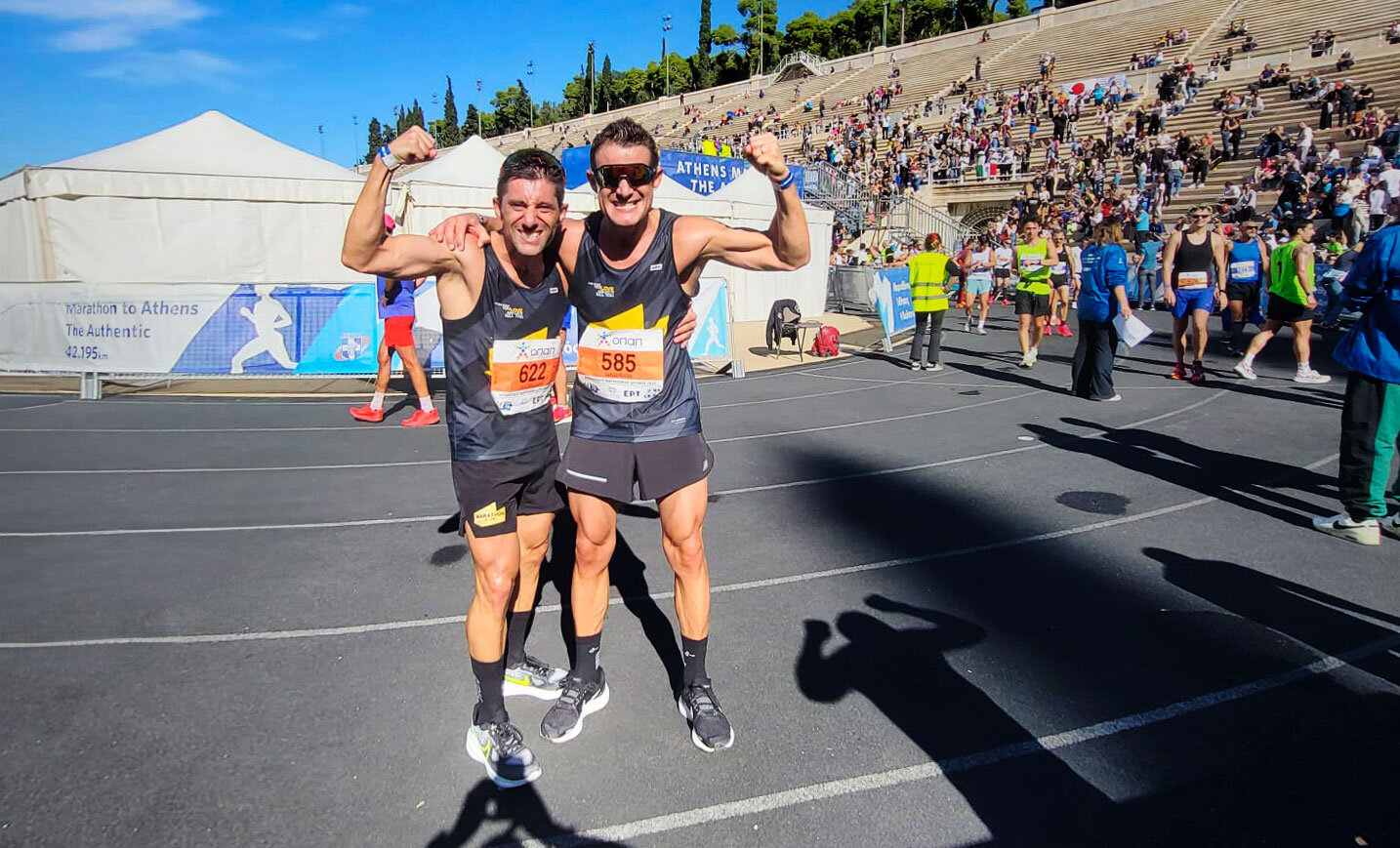
Two other great friends, José Luis and Chema, should have also experienced it, but due to different personal circumstances they could not. I hope and wish that one day we can form the five, as planned in 2023, at the Marathon starting line and face together the 42,195 kilometers with the most history. I trust that life will allow me to once again enjoy the unique experience of running into the Panathenaic Stadium in Athens.
I heartily encourage any runner who loves the marathon to dream of competing in the Athens Marathon sometime in their life.
Eating correctly is key to improving as a runner. It may seem obvious, but reality shows us that things are not always clear. It is very common to find runners with many doubts, erroneous beliefs or confusion about what correct nutrition should be to achieve adequate and correct sports performance.
Training is the basis of improvement in any sports specialty, but in order to obtain effective benefits from training, you must follow a correct procedure.limentation.
On too many occasions there are popular runners who care a lot about how to train to improve times or face the challenges of long-distance races, but they neglect or do not give due importance to proper training.limentation.
Eating correctly has benefits in health, sports performance and physical appearance
Why and why is it important to eat correctly? Eating correctly provides benefits in three very important areas, ordered according to their importance as follows:
- Health.
- Sports performance.
- Healthy physical appearance.
When looking for reasons or reasons to eat correctly we should always be clear that the main priority is health, secondly sports performance and thirdly having a healthy physical appearance.

Have some good nutritional habits It will provide benefits at different levels for health, sports performance and a healthy physical appearance. Let's see the most notable ones below:
Decreased risk of pathologies. With a good nutritional status, the chances of suffering from pathologies such as Hypertension, d, hyperuricemia, hypercholesterolemia, hepatic steatosis, etc.; and if they already suffer (and are not acquired through family genetic inheritance), it is possible to reverse them and make them disappear.
Health & Wellness. Reducing the risk of pathologies is promoting a optimal health for any patient (men, women, athletes, pregnant women, nursing mothers, the elderly, children, etc.), which represents a considerable increase in quality of life as well as economic savings due to lower spending on drugs.
Weight loss. Evidently, eating correctly following a correctly designed (and followed) diet, moderately hypocaloric in nature, has a loss of fat mass.
Increased muscle mass. A dietary plan proposed in harmony with the training plan established by a coach allows the athlete increase your muscle tissue. Eating correctly in combination with good training focused on the established sports objective will mean a healthy physical appearance.
Post-workout recovery. Eat correctly under correct guidelineslimentaria will help recover muscle glycogen stores, regenerate broken muscle fibers during training, etc. If a runner makes the mistake of neglecting his or herlimentation, you can end up showing wear and tear and the demands of training; without a correct alimentation, sooner or later, feelings of weakness or fatigue will appear, which will mean loss of sports performance.
Preparation of competitive appointments. Eating correctly throughout the season, and specifically the week before a competition (especially the day of the test) is essential for correct sports performance, whatever the sport practiced. The difference between getting on the podium or not, improving personal bests or finishing with more energy than rivals is in thelimeTraining (and at the training level, obviously).
Increased athletic performance. SlablimeThe things that are ingested are the gasoline that is provided to the body to make an effort (among many other functions). A supercar uses 98 unleaded gasoline, not diesel, so if you want to perform, you will have to give your body 98 unleaded gasoline, that is, a alimehealthy eating and perfectly designed based on sex, age, type of sport, work and training schedules, blood test results, pathologies, needs and tastes, etc.
Lesions decrease. It is clear that eating correctly will not prevent you from spraining your ankle while running because of a pothole or a rock, or it will not prevent you from dropping a dumbbell on your foot in the gym and causing an injury. However, a diet that provides the necessary energy, as well as the recommended daily intakes of all the essential nutrients, is capable of avoid the appearance of cramps or jerks, therefore increasing sports performance.
Eating correctly does not have to be confused with eating less.
Sometimes there is a false belief that eating correctly means eating less, but in reality what it is about is eating well.
When a person decides to lose weight (reduce fat mass) one of the first decisions they usually make is to cut back on daily calorie consumption. Is it a correct decision? The answer to this question requires a prior clarification: to achieve a weight reduction (fat mass) a negative caloric balance must be generated, or what is the same "burn" with physical activity more calories than consumed in the different intakes.
To achieve this negative caloric balance there are several ways:
- Reduce the amount of kcal ingested on a daily basis.
- Increase our daily caloric expenditure.
- Merge both options: cut back on intakes and increase physical activity
In most cases the best option is increase exercise and not just reduce calories without further ado. Although it is advisable to individualize and personalize each case (because each person may have personal and specific circumstances); In other words: what a runner says he or she does through their social reds cannot be generalized as what is ideal for anyone.
Reduce without any criteria the quantity and/or frequency of intakes can be harmful to health since you can fall into macronutrient (carbohydrates, proteins and fats) and/or micronutrient (vitamins and minerals) deficiencies. This is a bad decision because it can cause various damages: tiredness, fatigue, bad mood, hypoglycemia, anxiety, decreased athletic performance, anemia, easier to fall ill (the immune system is weakened), etc.
Furthermore, and as stated in another article on this blog Losing weight in the middle of the competition season can be a bad decision. It is not advisable to undertake a weight loss strategy during the competitive period because it will be difficult to obtain benefits and sporting performance will surely be harmed.
On the subject oflimentation to reduce fat mass (weight loss)The best advice that can be given is go to a registered dietitian-nutritionisto to be in charge of designing a dietary plan adjusted to the needs, lifestyle and sporting demands of each person. A dietitian-nutritionist will always look for the best option to allow the person to achieve their sporting goals but always having as the highest priority the improvement of health through correct nutrition.limentation.
Remember, it's not about eating less but about eating correctly. You can reduce body fat with something as easy as doing frequent physical activity and eating correctly: eating a healthy, varied and balanced diet in which no group of foods is eliminated.limentos (consume meat, fish, eggs, fruits, vegetables, nuts, legumes, pasta, rice, dairy products, bread...), but in which the foods are clearly limited.limeultra-processed nts.
Forget the 'beats'limentos'; eating correctly is eating everything in the right amount
If you are a popular runner and you care about your nutrition, you have probably heard of the term 'exceed'.lime'ntos'.
If we had to define what the exceedslimein it would be something like “those toliments that have the capacity to cover all the energy and nutritional needs of the individual.”
But does anyone believe that alimeHow much can it have the capacity to cover all the energy and nutritional needs of the individual? Well no. The term 'exceedslimento' should not exist, however we can talk about itliments that have “X” capacity on health.
Avocado is good for the heart and has been considered a 'superlimento'. Indeed, numerous studies conclude that adequate consumption of said alimento contributes to a good state of cardiovascular health, improving blood levels of cholesterol, triglycerides, etc. Does this mean thatlimeIs eating avocados good for your health? No; someone who only knowslimeIf you eat avocados, you will probably end up suffering from hypoglycemia and you will always be exhausted, anxious, hungry, etc.

Eating correctly is consume theliments of all kinds in their right measure. You should not abuse alimenot because they say it is good, nor radically avoid othersliments. Would you like to eat a donut one day? (not every day of the week)? Forward! Food is one of the great pleasures in life.
Therefore, rather than talking about surpassinglimewe should do it exceedslimentation, which would be defined as a style oflimentation in which all groups oflimein (dairy, bread, pasta, rice, legumes, nuts, fruits, vegetables, meat, fish, eggs, etc.) and allows the individual to achieve a correct nutritional and health status.
In other words: One tolimento, no matter how good it is, is not capable of covering all the nutritional needs of a person, while onelimeVaried and balanced nutrition allows the person to achieve the recommended daily intakes (RDI) and maintain an adequate state of health. Eating correctly is, in short, having alimeRich and varied nutrition that optimally covers the needs that we may individually have based on our age, sex, state of health and demands related to the physical activity we perform.
Gastrointestinal problems are one of the main risks (and fears) that runners face in background tests like the marathon, trail races running long distance or ultra-resistance tests (6H, 12H and 24H).
The appearance of gastrointestinal problems dDuring a competition it can spoil all the chances of achieving the desired sporting goal. Most runners have experienced the difficulties and annoyances representing running with gastrointestinal problems, especially when this happens in tests lasting several hours (as is the case of the marathon, racing mountaineering, triathlon events, duathlons, etc.) in which the intake of alimentos, supplements, liquids, etc. to maintain sporting performance and avoid the dreaded “birds" as the hyponatremia.
Between 30% and 50% of runners suffer gastrointestinal problems in long distance events
Alimenting and hydrating correctly is necessary, essential to be exact, in races of a certain duration, but it is of great importance to do it correctly to avoid the appearance of gastrointestinal problems, which tend to be, as already indicated, very common.
Studies show that between 30% and 50% of the participants in long distance tests suffer from gastrointestinal disorders or problems. Fortunately, the majority manage to complete the course with more or less success, but it is also true that sometimes gastrointestinal problems can force abandonment because they trigger more serious consequences and put the athlete's health at risk.

We present below some of the most common symptoms gastrointestinal problems What runners can suffer during a long-distance event (and I am sure that the vast majority of runners have suffered some of these gastrointestinal problems at some point):
- Refluxes/burning.
- Eruptions.
- Distension/swelling.
- Stomachache.
- Nausea/vomiting.
- Intestinal cramps.
- Stabs.
- Flatulence.
- Gases.
- Urgency in defecation.
- Diarrhea
- Intestinal bleeding.
Running for hours with any of the gastrointestinal problems listed can be, at best, uncomfortable, although the discomfort can turn into major complications (lack of strength, dizziness, anxiety, abdominal pain, cramps...) and even lead to make the aspiration of crossing the finish line extremely difficult.

Main risk factors for gastrointestinal problems
Some of the gastrointestinal problems mentioned can be prevented. There are a series of factors that increase the risk of suffering from these disorders. Listed below are the main risk factors to suffer from these disorders in long-distance runners.
- Age. The appearance of gastrointestinal problems is more common in young athletes.
- Sex. The appearance of gastrointestinal problems is more common in of (especially during the menstrual period).
- Training level. The appearance of gastrointestinal problems is greater in athletes during their period of initiation to the competition.
- Pre-event intake. To avoid the appearance of gastrointestinal problems, it is recommended avoid fat and fiber. Consume carbohydrates (not whole grains) and protein. (This point will depend on the tolerance of each individual).
- Caffeine. It may be important for performance, but it is necessary control doses pre-competition and during the test, or even divide them into 2 shots.
- Dehydration. It usually occurs in the final part of races and is related to the appearance of gastrointestinal problems. Replace fluids and minerals It is essential during the race to avoid the dreaded dehydration that can destroy all hopes of reaching the finish line.
- Consumption of gels, bars, rehydration drinks,limein, etc. Must be test exhaustively in training individual tolerance of each and every product that will be consumed on the day of the race. On the day of the race you cannot do experiments: all thelimeThe liquids and solids consumed must have been previously tested in training to know how the body tolerates them.

Recommendations to avoid gastrointestinal problems
The following recommendations are of a general nature and may vary according to each athlete, type of sport, duration and intensity of the event, weather ... But they are a factor to take into account to prevent gastrointestinal problems:
- Always try the strategieslimentation and hydration in training and never on the same day of the race. If the sporting goal is a marathon, my recommendation is to try the strategy oflimentation and hydration in training and if the result is satisfactory, then try it in a test prior to the marathon that we have as our objective. Once we have ensured that it does not cause us any harm either in training or in competition, we can carry out the strategy in the objective test without fear of the appearance of gastrointestinal problems.
- Carbohydrate intake. ingest 60-70g of carbohydrates (HC) for each hour of competition. This amount can reach 90g HC / h according to the tolerance of the individual. In running races, the intake of 40-60g HC / h is recommended.
- Hydration. ingest 500-700ml of liquid per hour.
- Sodium intake. Take between 250-350mg sodium per hour. Replacement gels, capsules or drinks are some of the possible ways to consume it.
- Caffeine. Consume between half an hour and one hour before the start of the test. 2-3 mg of caffeine per kg of body weight (For example a 70kg runner will consume 140-210mg of caffeine in the test). If the race lasts more than 8-9 hours, this amount can be repeated every 3-4 hours.
- Consumption of supplements. Bars, gels, replacement drinks, etc. They are a great way to obtain carbohydrates, liquid, caffeine and minerals due to their easy consumption, digestion and absorption. Note: supplements in gel format should be taken with water to facilitate swallowing and dilute the concentration of sugars.
42K has renewed its entire socks catalog running with 3 new collections in three different measures: 22 cms, 14 cms y ankle braces.
Three new collections of technical socks from running and multisport to satisfy all tastes of cane heights: Ingravity2 (22 cm), Etna2 (14cms) y Low Run (ankles).
Socks running with three shaft heights
The socks catalog running 42K has grown with the incorporation of three new collections different in terms of style and shaft height, but with a common denominator: excellent technical quality at an unbeatable price.
All socks 42K They are designed and developed to meet the expectations of the most demanding runners. Like all products 42K They have been tested in different terrains, distances (races and/or training from 1 hour to 5 hours) and circumstances (different intensities and rhythms; in heat and cold...) by runners of 42K to verify that its performance is optimal.
Ingravity2, socks running high cane
The Ingravity2 It is designed for those runners who are looking for socks. running de tall cane with minimalist design discreet colors. They have 22 centimeters of shaft height and offer maximum comfort for running, triathlon, cycling or Nordic walking.
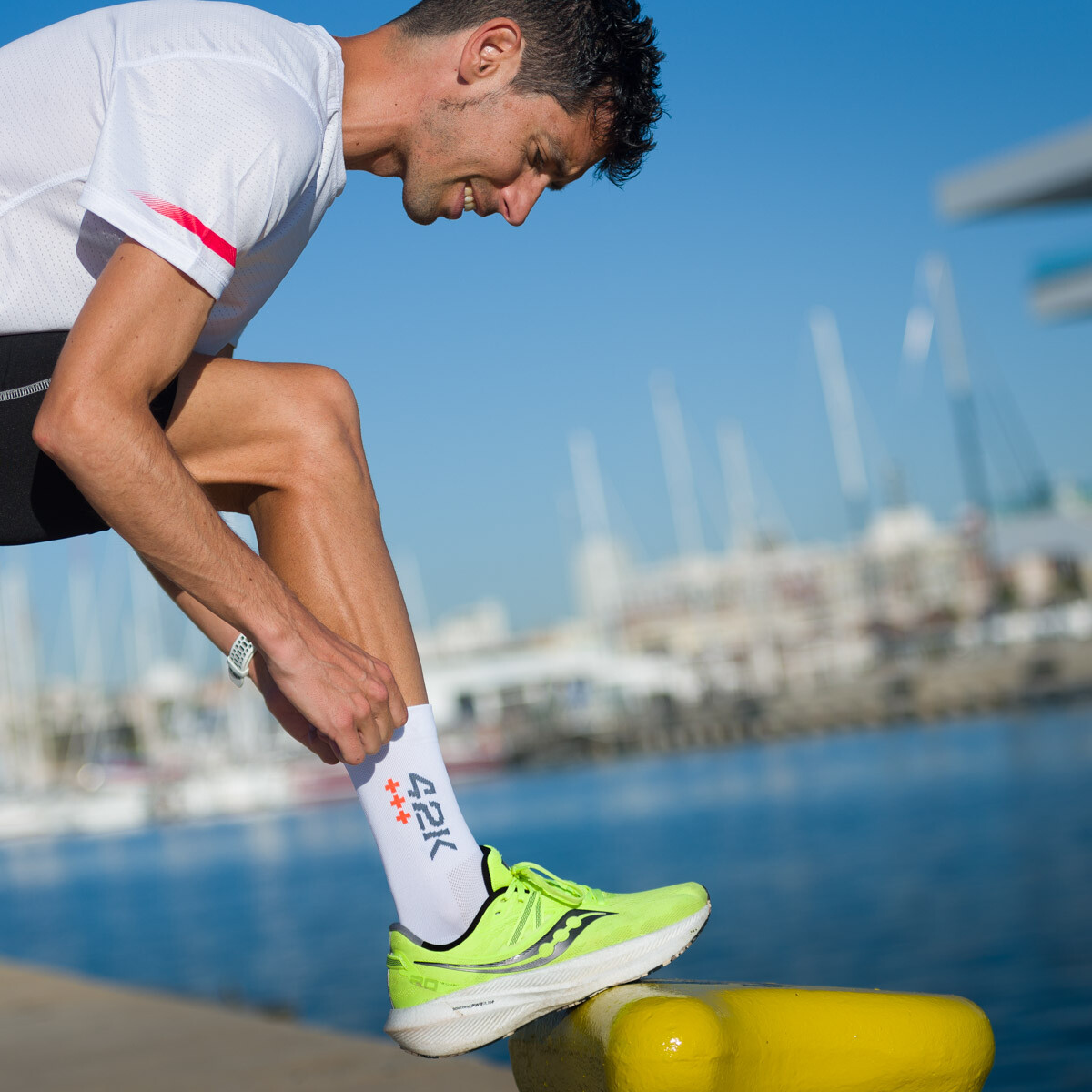
Its fabric and design make it feel like a second skin thanks to its semi-compressive fit. guaranteesn a excellent performance during sports practice, both in short distances and in long runs, standing out for its comfort, breathability and durability.
The Ingravity2 are manufactured with VAPORFEEL PURE®, a material of high resistance to abrasion and impacts which makes them very durable. Another of its properties is that it transports moisture to the outside and keeps your feet dry. In addition, VAPORFEEL PURE® incorporates bactericidal action and antimicrobial which neutralizes possible discomfort and bad odors caused by bacteria and fungi on the skin.

Another of the singularities of this collection is that it incorporates a new treatment grip which favors the anti-slip of the foot
The Ingravity2 wear the logo 42K embroidery on the exterior side and are available in four colors: navy (blue), black, white y grey.
with these socks running Some of our athletes have already competed in long-distance events, such as Carmen Pérez and Sete Cerdán, in the demanding Climb to Pico Veleta (Carmen was the female winner), a 50-kilometer (+2.705m) test in the socks Ingravity2 demonstrated magnificent performance during the almost 5 hours of racing in the middle of August and on the hot Granada asphalt.

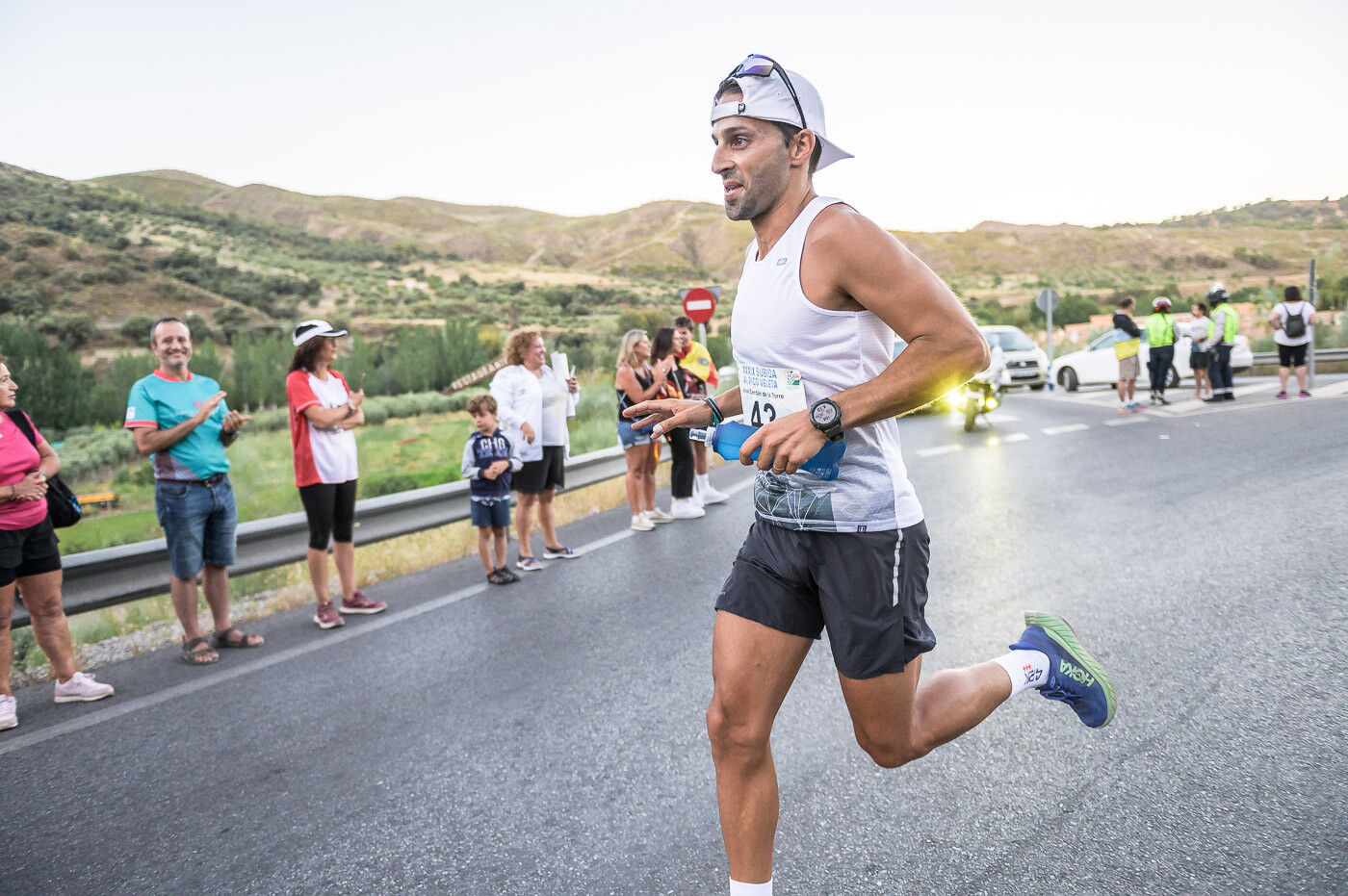
Etna2, socks running 14 cm
A few years ago we named one of the most successful collections of technical socks after the famous Sicilian volcano Etna. 42K.
The etna2 They are a total renewal of the successful Etna sock by 14 cms and are perfect for runners, both on asphalt and in the mountains, who want a high-performance technical sock of Average height y semi-compressive fit.
New ones have been incorporated into the Etna2 fluorine colors for those runners who want to put a striking splash of color to your strides, although they are also available in black and white for more classic runners.
The main improvement and novelty of the Etna2 is the preparation with VAPORFEEL®, a material used by some of the most important sports brands on the market to manufacture high-performance technical socks.
The thermal properties of VAPORFEEL® (especially optimal for humid climates) facilitate the transport of the sweat to the outside which helps keep feet dry, minimizing the risk of blisters and ensuring a high level of comfort in all types of training or short, medium and long distance races.
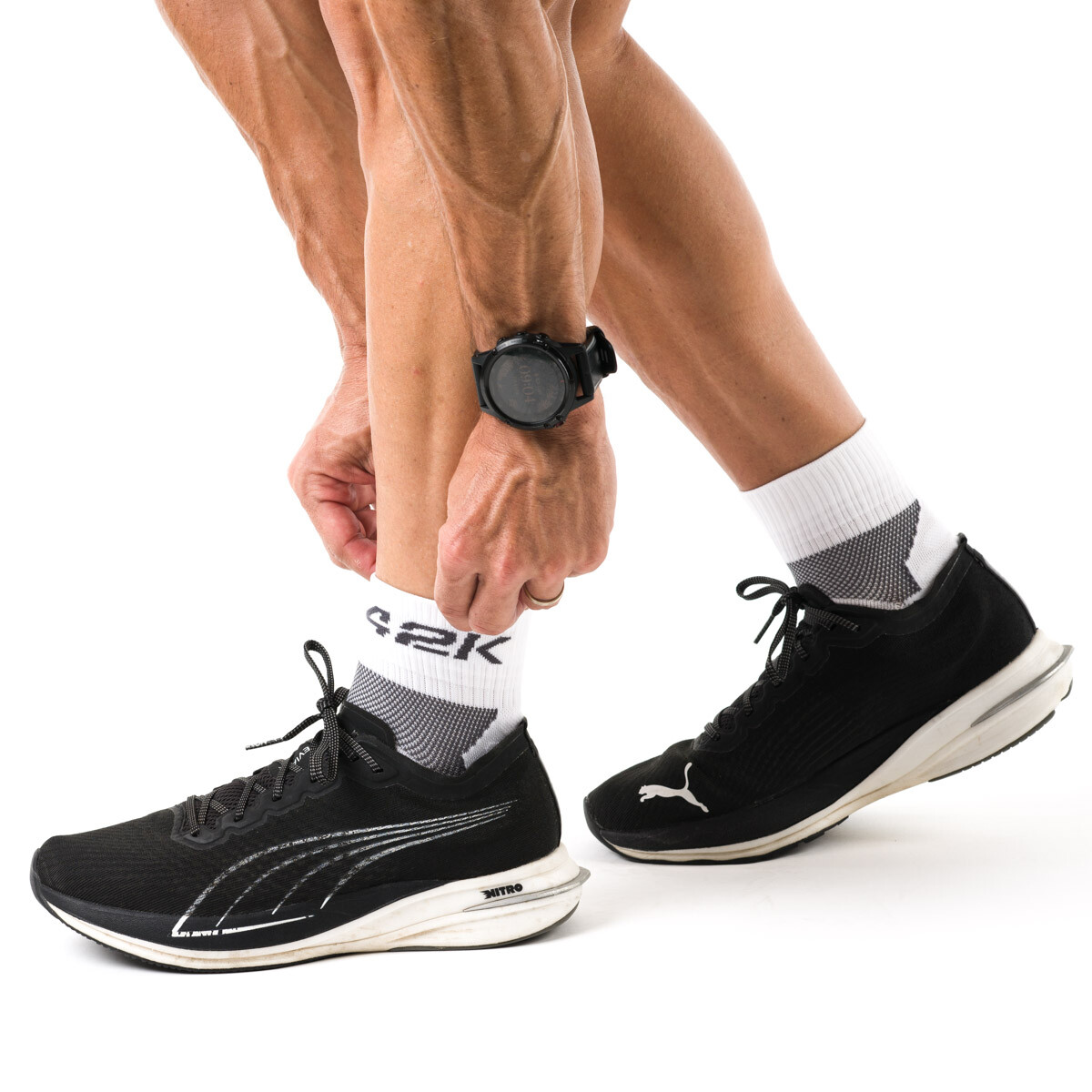
This material allows us to create technical socks that are perfect for intensive practice of running in hot or humid environments thanks to its optimal sweat evacuation capacity.
Incorporate reinforcements and specially padded areas en toecap, metatarsals, heel y Achilles tendon to provide protection and cushioning to the parts of the foot that can suffer the most during running.
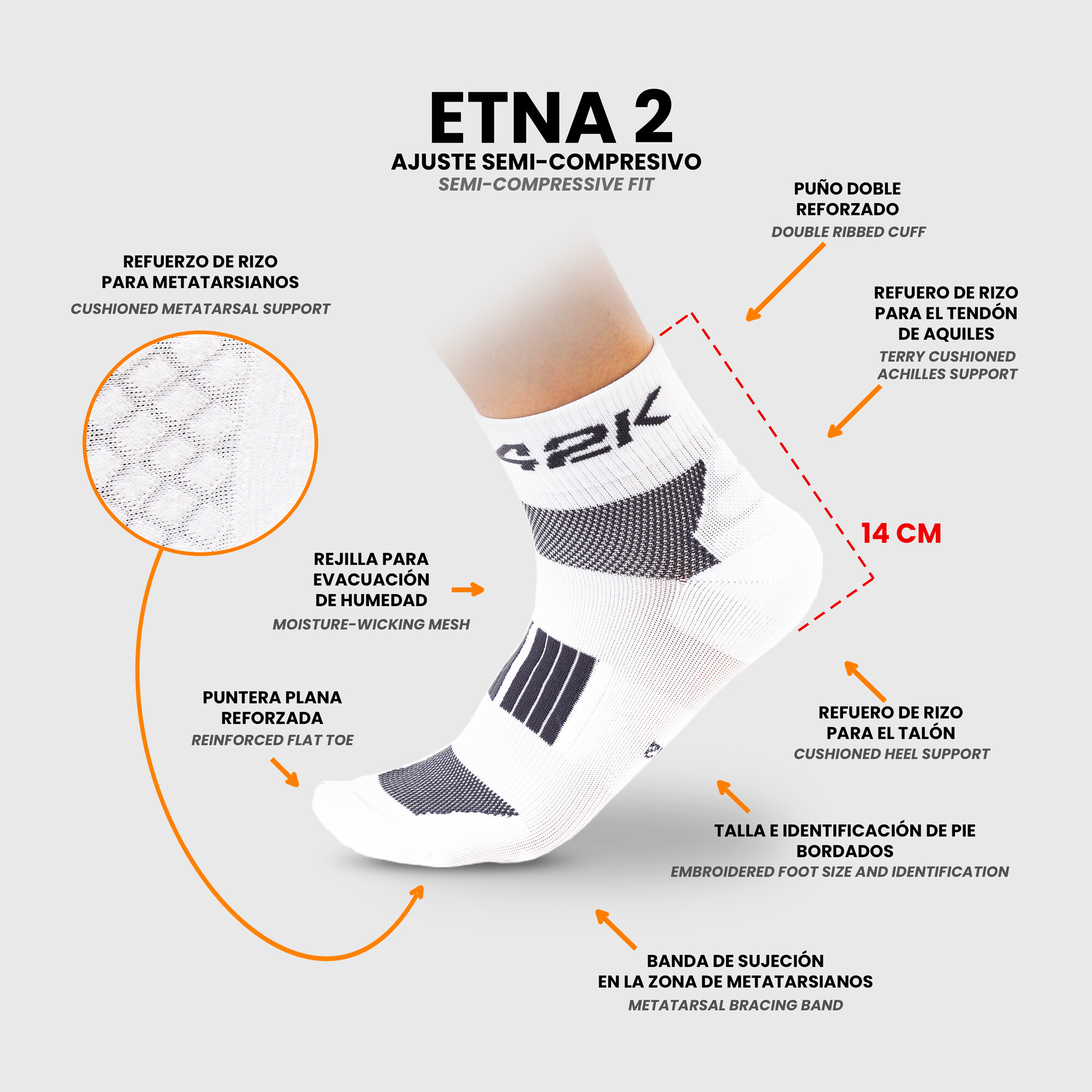
The Etna2 collection is made up of five colors: three fluorine (pink, yellow y orange), white y black.
Low Run, socks running ankle braces
The Low Run is the latest to join the catalog of technical socks for running and multisport 42K.
These are ankle socks fine tissueThanks to its 1 thread sewing, and are ideal for runners who want a light sock almost invisible that feels like a second skin.
The height of the shaft is at ankle level to offer protection against any possible friction with the collar of the shoe and on the back it has a special tab to avoid discomfort with the buttress.
Like the Etna2 collection, they are made with VAPORFEEL®, a high-density material that stands out for its lightness and resistance to abrasion, with optimal thermal properties for humid climates by transporting sweat to the outside and keeping feet dry to reduce the risk of blisters forming.
they have reinforcements and terry zones specially padded in the required areas (toe, sole and heel) to avoid discomfort from chafing.

The Low Run collection is made up of 3 colors: white, black y light sky blue.
The importance of good socks running
Choosing good technical socks is the best guarantee to enjoy the running. People who are starting out in the world of running They mistakenly believe that any sports sock is valid for running and that is not the case. The choice of Inappropriate sports socks can cause problems (irritations, chafing and even blisters) if used for regular running or long-term training.
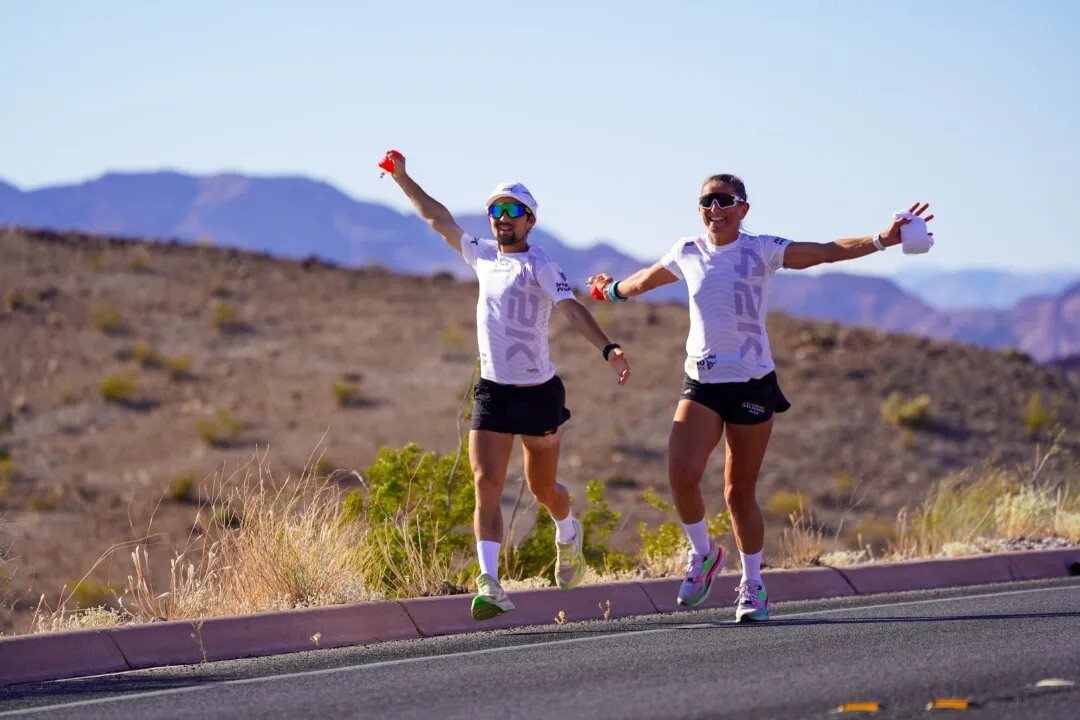
As we explain in another article on this blog titled Technical clothing to start running, the feet are one of the parts of the body that any runner must especially take care of and that is why the correct choice of specific socks for them is so important. running.
A Pair of healthy and problem-free feet They are necessary in any sport that involves running, but it is essential when the sport being performed is running.
And to enjoy the running With healthy feet you have to choose the appropriate technical material in terms of shoes and socks. In the case of choosing socks running You have to make sure that they guarantee good grip y protection of the most delicate areas of the foot, as well as correct evacuation of sweat to the outside to avoid risks of irritation or softening of the skin.
42K commitment to the preparation of its different collections of socks running by high-quality technical fabrics that stand out for their qualities of elasticity and fit, breathability (important in any sports sock, but essential in a sock for running) Y durability.
Socks running made in Spain
All socks running 42K are made in Spain and are offered in savings-packs that allow their purchase with a 10% discount on the unit price.
Fartlek It is one of the terms that is part of the universal language of running. Fartlek is a swedish word which means “speed game” and give name to resistance training method developed by Swedish coaches Gösse Holmer and Gösta Olander in the 30s
Almost one hundred years after its implementation, this training method continues to be widely used in athletics and also in sports. running popular.
In this article we are going to analyze the benefits of fartlek, how to do it and what it is for.
Fartlek or variable continuous training
Resistance training methods can be grouped into two types: constant continuous training y variable continuous training (fartlek). Continuous training is characterized by no recovery breaks.
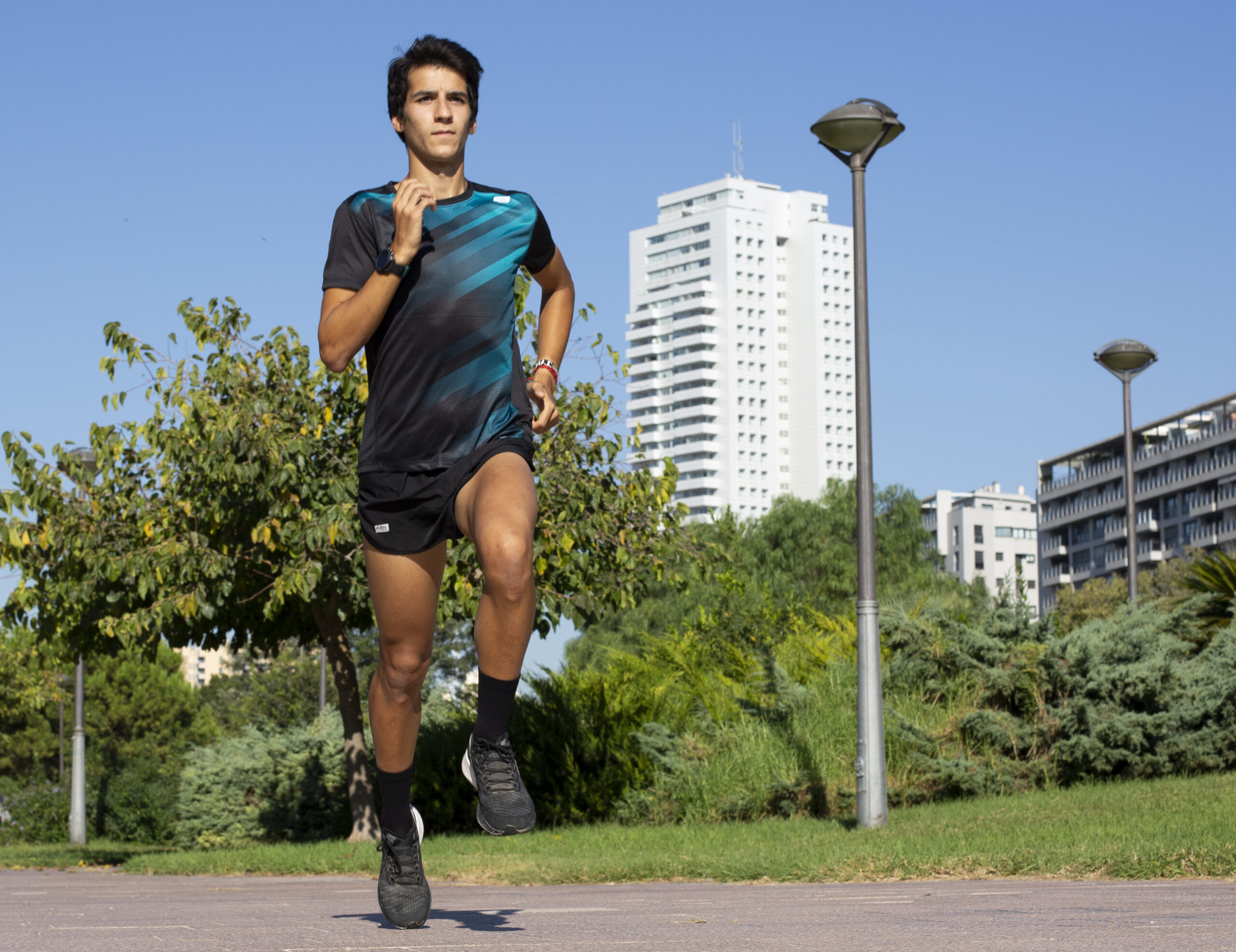
The training continuous constant serves to improve the aerobic resistance and, in summary, it consists of traveling a long distance (more than 30 minutes of continuous running) at constant intensity, no change of pace and without taking recovery breaks.
The training continuous variable or fartlek, instead, introduce changes of rhythm which can be forced by the terrain or the speed of the runner. That 'adaptability' to changes of pace is why its creators baptized it as a “speed game” (fartlek).
Fartlek is a highly effective and versatile training method, used in the running to improve la resistance, speed and aerobic capacity.
This type of training combines intensity intervals with lower intensity recovery periods; Depending on the level of the runner, recovery can be done by running or walking.
It is a training in which there are no breaks for recovery; You do not stop running and alternate changes of pace (it can also be done using ''CA-CO'', which is WALKING and RUN; this option is the most recommended for beginner runners or for runners who are returning after a long time break due to injury, illness...), it can also be done on varied terrain, which makes it a powerful tool for runners of all levels.
Benefits of fartlek training
Let's see below the benefits that the variable continuous training method or fartlek can bring.
- Improvement of aerobic and anaerobic capacity. Fartlek involves alternating intense rhythms (depending on our goal, more or less intensity) and softer rhythms. This It helps improve the aerobic capacity, which is the body's ability to use oxygen during prolonged exercise, such as anaerobic capacity, which refers to the ability to perform intense efforts for a short period without depending as much on oxygen.
- Increased resistance. The variability of rhythms in the fartlek simulates the variation in intensity that can occur with changes in pace in the race. This improves mental and physical resistance, preparing runners to cope with different conditions during a competition. In the winter season, some athletes who prepare cross (a long-distance athletic modality that takes place partially or totally in cross country) they usually use the fartlek in their training. Cross country is a modality that is run on a circuit and in which a constant pace is not maintained; 4-5 laps are usually completed (depending on the competition) on a circuit of about 2 kilometers in which there are many turns, ups and downs, irregular surfaces... The fartlek can simulate what happens in a cross-country race.
- Burning calories. Of interest, high-intensity intervals in fartlek increase calorie burning during training. This can be beneficial for weight loss or maintaining a healthy weight.
- Specific training for races. The fartlek can be adapted to simulate the conditions of a specific race (such as a 5K, a 10K, or even a half marathon), greatly helping runners adapt to the paces and challenges they will encounter in real competition.
Without going much deeper into other more specific benefits for elite athletes, as a summary we could indicate that fartlek promotes improvement of rhythm and speed, allows you to obtain a diversity in training, helps improve the mental preparation and adaptation to diverse terrain facing the competition.
Alternating between faster and slower paces helps runners develop a better sense of rhythm and speed. Fartlek allows you to vary training and avoid monotony, something that can be especially useful for maintaining motivation and avoiding stagnation in performance.

It is also notable that high intensity intervals in fartlek they challenge the mental resistance of runners, helping them overcome fatigue and improve their ability to manage discomfort during races; and if the intensity of the intervals varies depending on the type of terrain (uphills, downhills, uneven surfaces) it can also be of great help as preparation and adaptation to the different race conditions that the athlete will encounter.
How to do fartlek training
We have already seen the benefits of fartlek, so now it is time to explain how to perform fartlek training:
Heating. We will start with a proper warm up to prepare the body for effort. Initially we will do joint mobility exercises and then we will start running 10'-15' depending on our level and at the end we will do a little running technique.
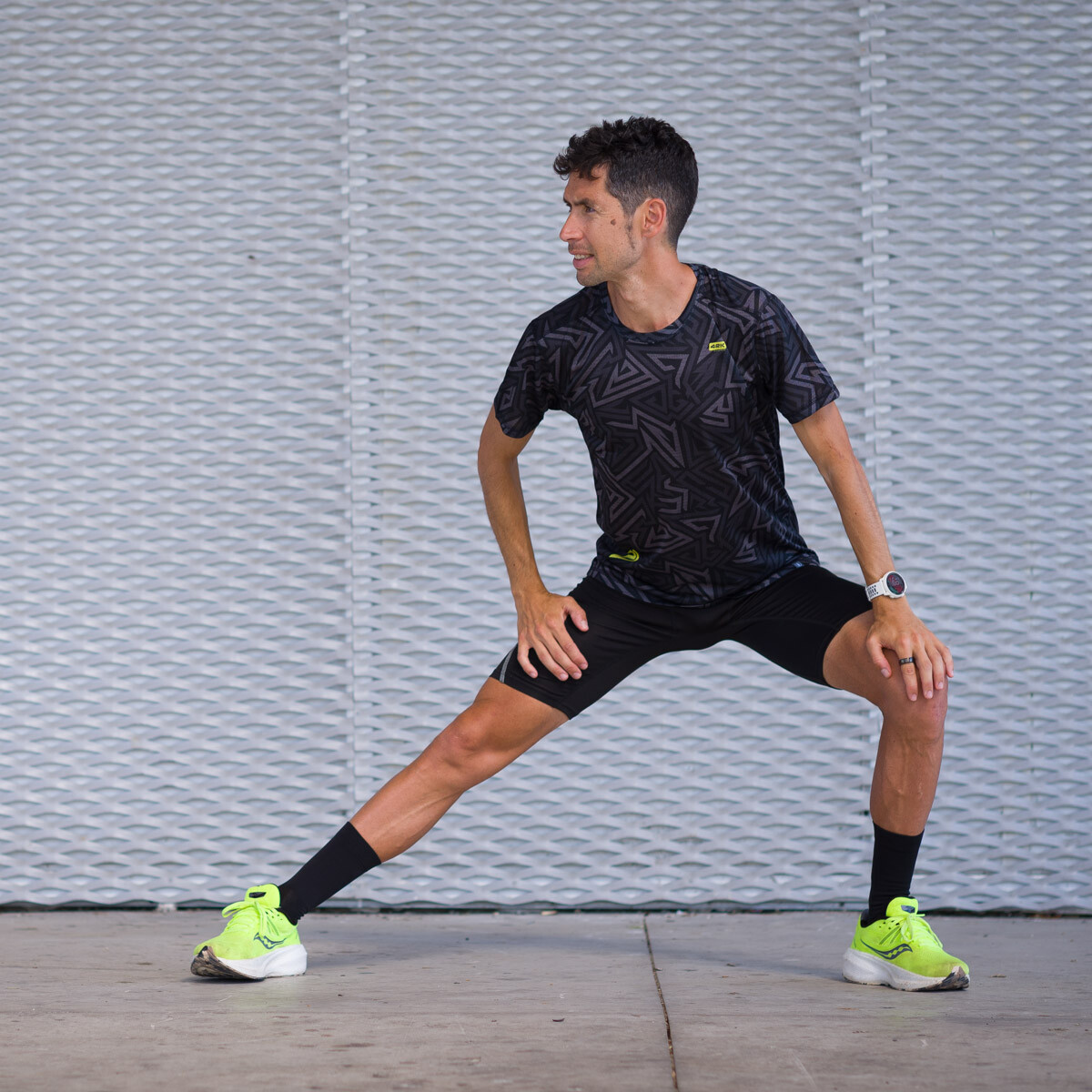
Interval Run. Depending on our objectives we will do a number of repetitions or others during the race, alternating between high intensity intervals and lighter recovery. For example, a runner with a 10K goal might start with a 6 x (2′ + 1′) fartleck doing the 2′ a little faster than the first threshold and easy recovery minute. Instead of going at a rhythm you can also do it by pulse. The ratio of time between intervals and recovery can vary depending on your goals and fitness level.
Variety of rhythms. It can be played with different rhythms and interval durations. You can run short, fast intervals, or longer, moderate intervals.
Varied terrain. If you are an athlete who prepares cross-country, choosing varied terrain (dirt terrain with moderate ups and downs, with curves...) will be very interesting and positive to achieve a good preparation for this modality.
Back to the calm. We will have to finish the session with a phase of lowering heart rate by doing a very light jog of 3'-5'.
Variability. Alternating between fartlek sessions and other types of training, long runs and recovery days is very convenient to maintain a balance in the training program.
Application of fartlek training by levels
Beginners. Beginner runners can start with shorter intervals and longer recovery. This allows you to gradually adapt to the intensity and build a solid base.
Intermediates. Intermediate runners can experiment with different work-to-recovery ratios, progressing to longer, more challenging intervals.
Advanced. Advanced runners can implement the fartlek as part of their weekly training plan. They can incorporate race-specific intervals and simulate competition conditions.
In summary, fartlek training in the running provides wide range of benefitsat improve endurance and speed until developing the mental resistance and the adaptability to different race conditions. Its flexibility and versatility make it an essential tool for runners looking to improve their performance and enjoy variety in their training.
September arrives and the pain in the sole of the foot begins, and when you go to the doctor he tells you about the "flip flop disease" or, technically, of the Plantar fasciitis.
Obviously, the misuse or abuse of flip flops is not the only cause that can cause plantar fasciitis, but physiotherapists can affirm that many of these injuries would be avoided if the use of flip flops were limited and they were not used continuously.
But what is plantar fasciitis? Plantar fasciitis is a inflammation of the Plantar fascia (o plantar aponeurosis) that covers the sole of the foot.
Plantar fascia injuries are very painful and disabling for a runner for being the support in the race; if the runner also tends to have a cavus foot and a valgus ankle, it is more likely to end up suffering from the dreaded plantar fasciitis with improper use of flip flops.
Plantar fasciitis, a very common injury after the summer
Plantar fasciitis is an injury very common in physiotherapists' offices after the summer period.
When summer arrives, there is a logical change in footwear and we go from closed footwear to more open footwear, which does not support the entire foot and the problem can arise when the use of footwear such as flip flops is abused.
This is because when we wear flip flops, the center gravity is usually later freeing the first toes (the first and fifth meta), generating an attraction on the back of the foot, on the calcaneus that will tighten the fascia with each step we take, especially in toe flip-flops (like the hawaiian).

Due to this posteriority of the center of gravity, we will lose mobility in the ankle, generating a tendinopathy associated with the Achilles tendon, an overload of the calves that will pull on the calcaneus, generating more tension on the sole of the foot and creating a deficit in the buffer function.
Plantar fasciitis can make daily activities difficult
Plantar fasciitis is a pathology that should not be confused with posterior tibial nerve entrapment and Baxter nerve entrapment, which gives pain in the plantar fascia, confusing neural entrapment with a problem of plantar fasciitis.
You have to be very exhaustive and precise in the assessment to correctly treat the injury that really exists. In the case of neural entrapment, we must release the neuropathy to relieve pain, but this is not directly related to the lesion in the plantar structure.
If there is plantar fasciitis, that is, a real lesion in the plantar fascia, we have to give you a solution as soon as possible.
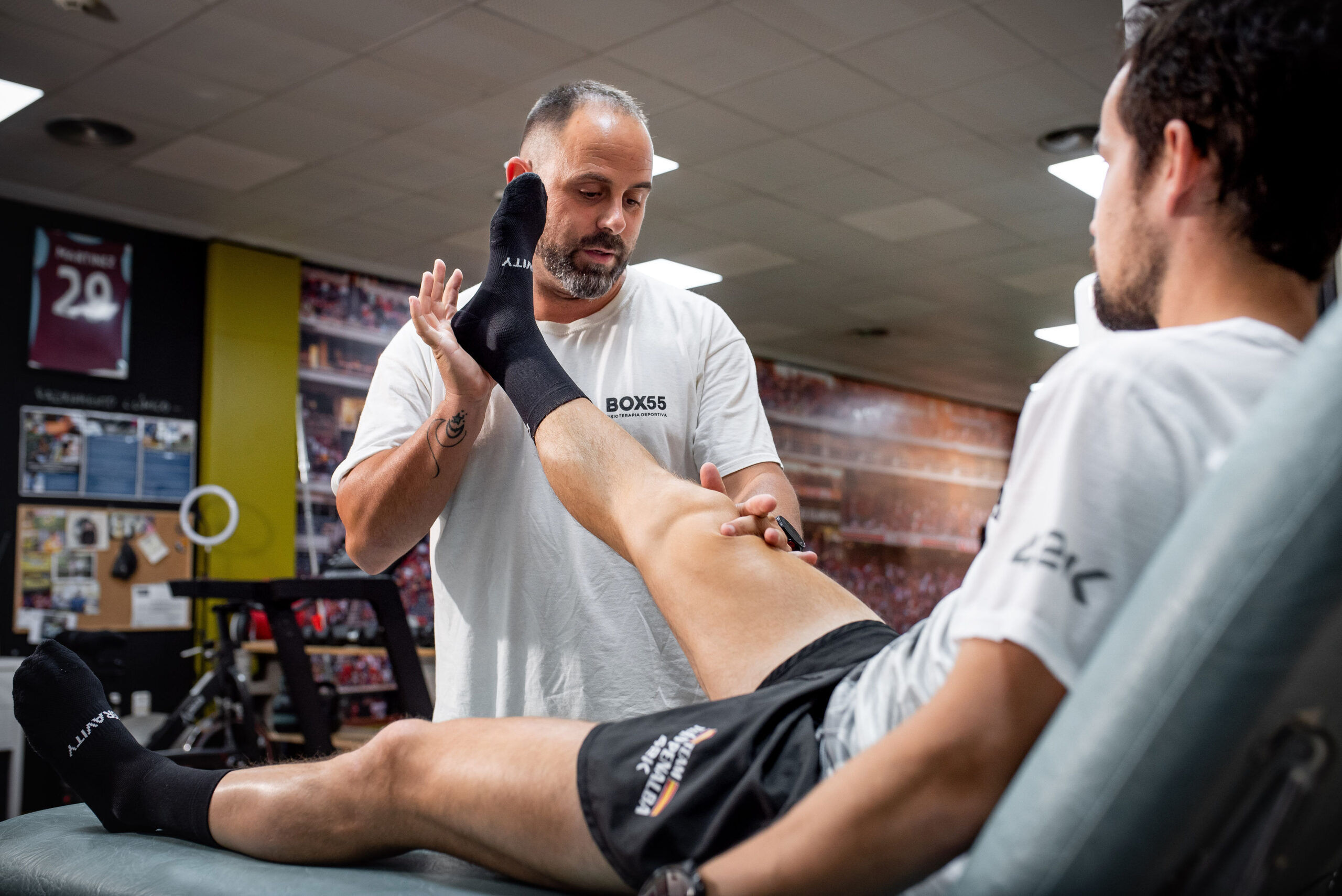
We are facing a setback that should not be underestimated because it can cause pain that makes daily activities difficult (we are not just talking about running anymore). And the great risk faced by those who do not quickly address the problem of plantar fasciitis is that to avoid the pain it produces, they end up changing the way they walk and that this ends up causing additional problems in the ankle, knee, hip or back.
The problem with this pathology is that it is a poorly vascularized structure, highly innervated and, in addition, it is where the weight of the body rests during the march, acting as a natural shock absorber in each stride we make.
The plantar fascia is a structure designed to cushion the impact and thus be able to distribute the loads during the race; It is a structure that will suffer in long-distance races (a marathon, for example) where the impact is always the same and will suffer less in short-distance races or where the impact is adapted to each step, such as in a trail.
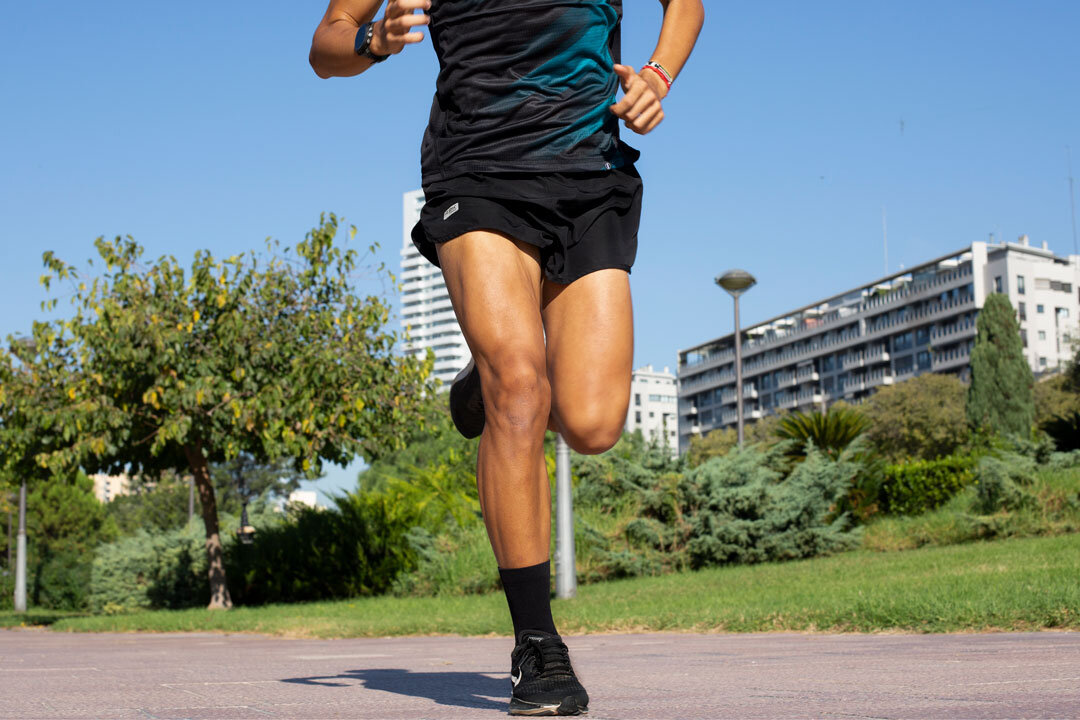
An injured fascia should measure approximately 40mm when an ultrasound is performed, and thus study whether the fascia is intact or damaged to differentiate whether it is tendinitis (inflammation) or tendinosis (degeneration) in both cases treatment by your trusted physiotherapist is mandatory and necessary.
It must be taken into account that an injury to the plantar fascia has a cure time of more or less 1 year Due to the fact that it is a little vascularized structure and therefore all the physiotherapy that can be applied to the tissue to improve the blood supply will improve the treatment and the decision of the plantar fascia.
Tips for using flip flops in summer
So, is the use of flip flops prohibited during the summer period? The answer, obviously, is no; the use of flip flops is not prohibited, but it is convenient to follow a series of recommendations to correctly choose the right flip flop to avoid the possibility of an injury as disabling as plantar fasciitis.
My advice for a correct choice of flip flops are the following:
- It must be comfortable.
- Preferably with an anterior inclination.
- Avoiding flip-flops that set the first goal and condition on the foot.
- Choice of bridge flip flop, comfortable, soft and cushioning.
- Alternate flip flops with walking barefoot.
- Do compensatory ankle mobility and calf and soleus stretches.
- Alternate the use of flip flops with slippers; what should not be done is to wear flip flops continuously.
Recommendations to recover from plantar fasciitis
As to home treatment to be done to help the physiotherapy treatment so that the structure heals and the biomechanics of the leg help to improve, my recommendations are the following:
- Apply heat to the sole area of the foot to improve vascularization
- Treat with Foam Roller, the gastrocnemius and soleus to remove tension in heel traction.
- Walking barefoot on different floors to educate the fascia to the pressure of the ground
- Avoid using flip flops.
- Avoid heels and platashapes.
- Perform foot muscle strengthening exercises, explained and directed by your physiotherapist.
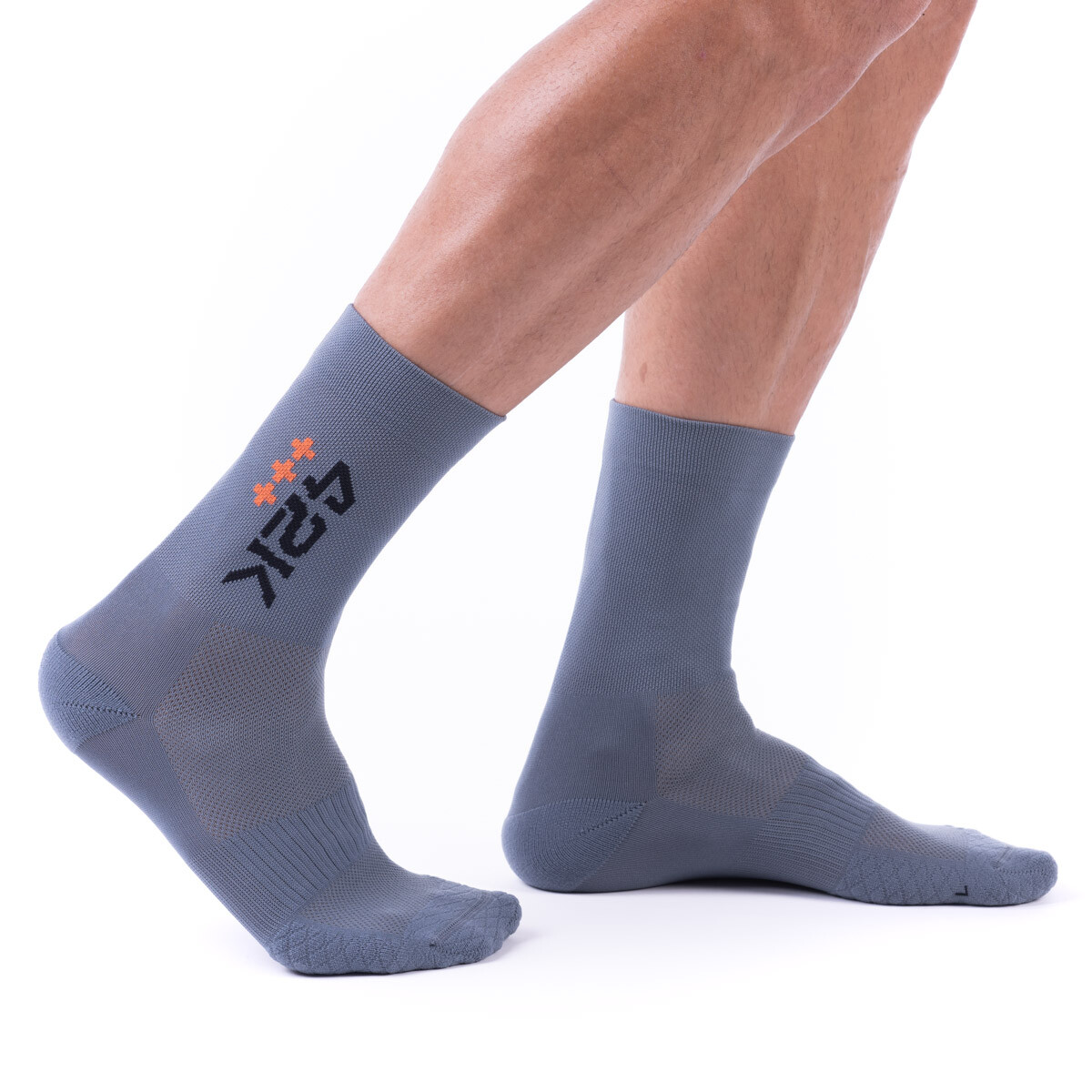
As we have indicated in other posts The best way to avoid suffering any injury is to prevent it.; Once the injury has occurred, it is extremely important to put yourself in the hands of a physiotherapy professional as soon as possible to work on the structural part of the injury while continuing to practice sports and be able to continue training to find the sporting objectives that you have set for yourself.
Other articles by physical therapist David Valenzuela, from Box 55.
If you are interested in other content related to injury prevention by physiotherapist David Valenzuela, you can find different articles on our blog that may be of interest to you.
For example, if you want to know how to prevent tendinopathy, you can find information in the article Tendinopathy, a 'hell' of injury. You can also find out how to prevent low back pain or meniscus injuries with the articles Low back pain, the good weather injury y How to prevent meniscus injuries.
If you are a mountain runner and you are interested in knowing how to prevent ankle sprains, you can read the article 3 golden rules to prevent ankle sprains on the trail running.
Starting to run after 40 is very common. In the last decade, both in Spain and in many other countries, the number of people who start running when they are close to 40 or even when they have surpassed them has grown remarkably.
reasons for this boom of runners after 40? The first reason could be that correr (The running) is in fashion and it has been shown that it is not a passing fad. Running has become a way of "invest" in health, leisure, relaxation...
For more than a decade now, the number of people who run (especially in the age bracket that goes from 35 to 50 years) is at levels that were unthinkable in the last decades of the last XNUMXth century.

Another very compelling piece of information is the comparison of the current numbers of participants in popular tests (5K, 10K and 15K), half marathons and marathons with those registered 20 or 25 years ago; The spectacular increase in the number of tests, both asphalt and mountain, that has taken place in the last five years is even very striking.
Still the percentage of men who run is higher that of women, but in the last decade (especially in the last five years) the growth of women in the running It has been very big in Spain.
A good thermometer is offered by the registrations for the races, which confirm a progressive growth in the percentage of female participation. And when analyzing the female participation in recent years in popular tests, it is observed that the highest percentage of female runners is concentrated in the age bracket that goes from 35 to 45 years.
Furthermore, another reason why running is fashionable and becomes the option chosen by many people who decide to do sports after 40 is that it is a cheap way to do sports and you can easily fit into complicated work schedules and family obligations.
Many people acknowledge having landed in the running from 40 to be the most flexible option to do sports that they have found without depending on fixed schedules and with the freedom of being able to put on their shoes and go out for kilometers at any time.
Before starting to run after 40, you should consult your doctor
As long as you do not have any health problems, physical limitations or are overweight (running with overweight can be harmful to joints, tendons and ligaments), start running after 40 can be healthy and positive, especially if it means abandoning a sedentary life and resuming physical activity. However, if you decide to start running after 40, it is advisable take a series of precautions to avoid unnecessary trouble.
And the first of the precautions must be consult with your family doctor in case you advise against running for any medical reason (chronic pathology, risk of specific injury due to a previous problem, incompatible drug treatment or that may affect heart rate...).
If the family doctor sees no problems, you can start adding the first kilometers of Thief (Walk and run, the method that we will see later), although it is very likely that he will talk to us about the convenience of performing a general check (a checkup and a blood test) and even submit to a stress test or ergometry to check the real physical state in which we find ourselves. For running it takes a healthy heart because it is a demanding physical activity.

From the age of 40, especially if you have not run before or are running again after a prolonged period of physical inactivity or sedentary lifestyle, it is necessary to be sure that the running It is not going to become a dangerous sporting activity or one that poses any risk to health.
Health and sport they must go always hand in hand. If our trusted doctor considers a review, analytical test and/or stress test necessary, we must listen to him.
General recommendations to start running after 40
Before listing a series of practical advice for anyone who decides to start running after 40, it is convenient to make some recommendation (or precaution) to take into account.
After making it clear that the first thing is to consult with our family doctor and follow his instructions (in terms of check-ups and revisions), we must also insist that certain things must be very clear from day one.
The first is Take it easy. There is no need to be in a hurry to progress. You need a adaptation period which can be more or less long according to each person; Logically, the adaptation will not be the same for those who have practiced sports regularly as for those who have spent several years without performing any physical activity or with a sedentary life.
Act quickly. start running little by little and, at least during the first 4/6 months, no competitive goals. After the age of 40, the body does not respond the same to the efforts that it does at the age of 20 or 30. From the age of 30 you begin to lose muscle mass (according to studies, between 3% and 5% every decade), so at 40 you do not have the same muscle strength, nor the same elasticity and recovery capacity after the efforts.
Therefore, it is necessary to be patient and favor the progressive adaptations of the muscles to the effort.

In general, if you have perseverance and strictly follow a training plan of 3 days a week, the normal thing is that three or four months after starting to run you begin to notice improvement (logically, everything will depend from the starting point of the physical state of each person).
So, you have to have patience and perseverance to overcome the adaptation period of 3/4 months which is usually what is normally needed to notice improvement and begin to "enjoy." Consistency is the best ally in any sport, but in running It is crucial and especially in the first months, which is when there are more reasons for discouragement.
The objective is progress 'with head' and without haste. Age makes you lose strength, aerobic capacity, flexibility... When you start running after 40 you have to be very sensible with training and with the efforts that are made in them. 'Forcing the machine' in the first months is going to mean a very high risk of discomfort and, worst of all, possible injuries.
Getting injured in the first few months of starting to run can be very discouraging because how much or little progress you have been able to make will come to nothing if you have to stop due to injury.
Practical advice to start running after 40
1. Follow a training plan
If you are starting from scratch or after a long period of inactivity, it is very important Have a proper training plan to the starting state.
The recommended thing to start running after 40 is to have a training plan designed by a fitness specialist. This way we will have the security of doing things right from the beginning and avoiding risks of injury. With a physical trainer who designs a tailor-made training plan, it will be much easier and safer progress.
Another option to get started running is CaCo method (Walk and run). The CaCo method is recommended for people who start running from scratch, but also for those people who return to running after a long break (whether for personal reasons or due to an injury), since it will avoid problems in muscles, tendons and joints.
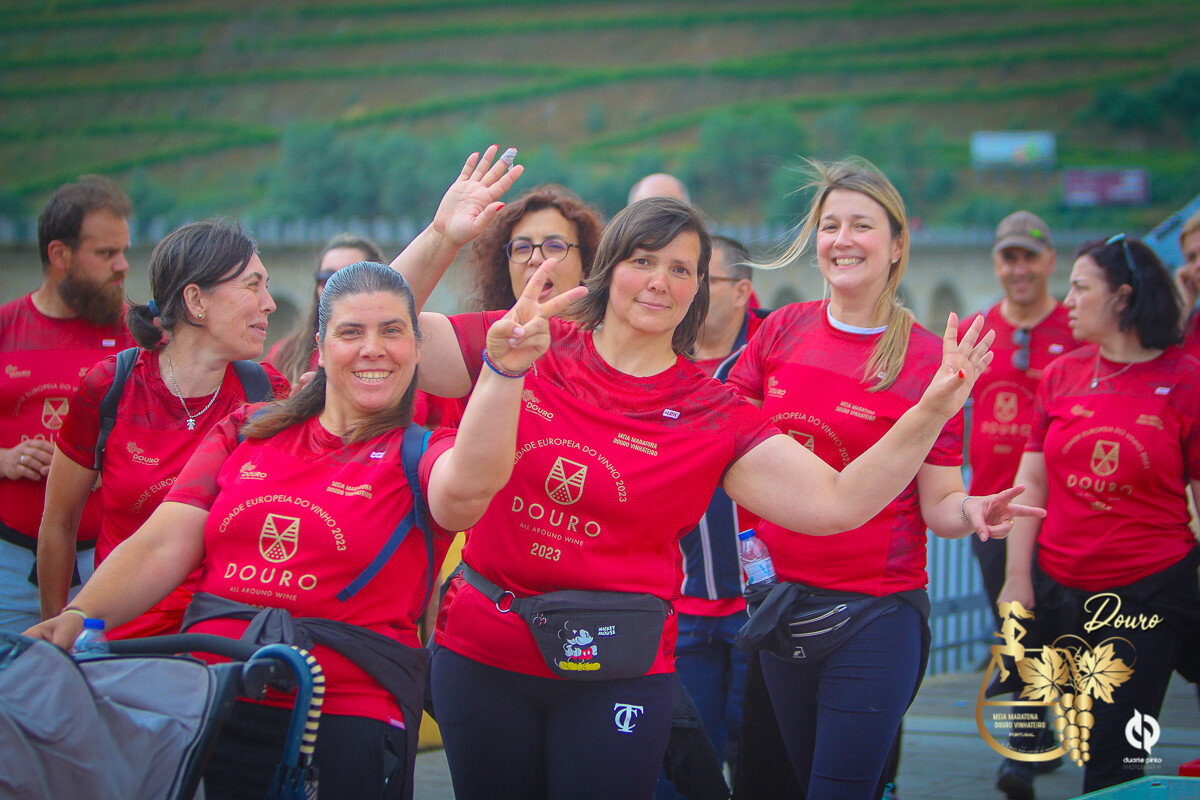
2. Invest in adequate and quality equipment.
It is not necessary to buy a state-of-the-art kit, but it is convenient correctly choose technical clothing and shoes.
The choice of slippers It is a subject that can be complex at first and that is why it is a good idea to seek advice from a specialized trade. You have to choose between more convenient to our footstepsa (supinator, pronator or neutral), weight (the weight is important to determine the ideal damping), number of kilometers weekly to be carried out and the terrain type on which you are going to run (dirt, asphalt...).
In our article 'Shoes to start running' We explain everything you have to take into account to choose a pair of shoes to start running.
The choice of technical clothing is, without a doubt, easier than shoes. You have to opt for light and comfortable clothing, that offer good breathability y speed of drying. In the article of this same blog titled 'Technical clothing to start running' A series of recommendations are detailed to know what to look for when choosing technical clothing to start running, especially what type of shirt and socks.
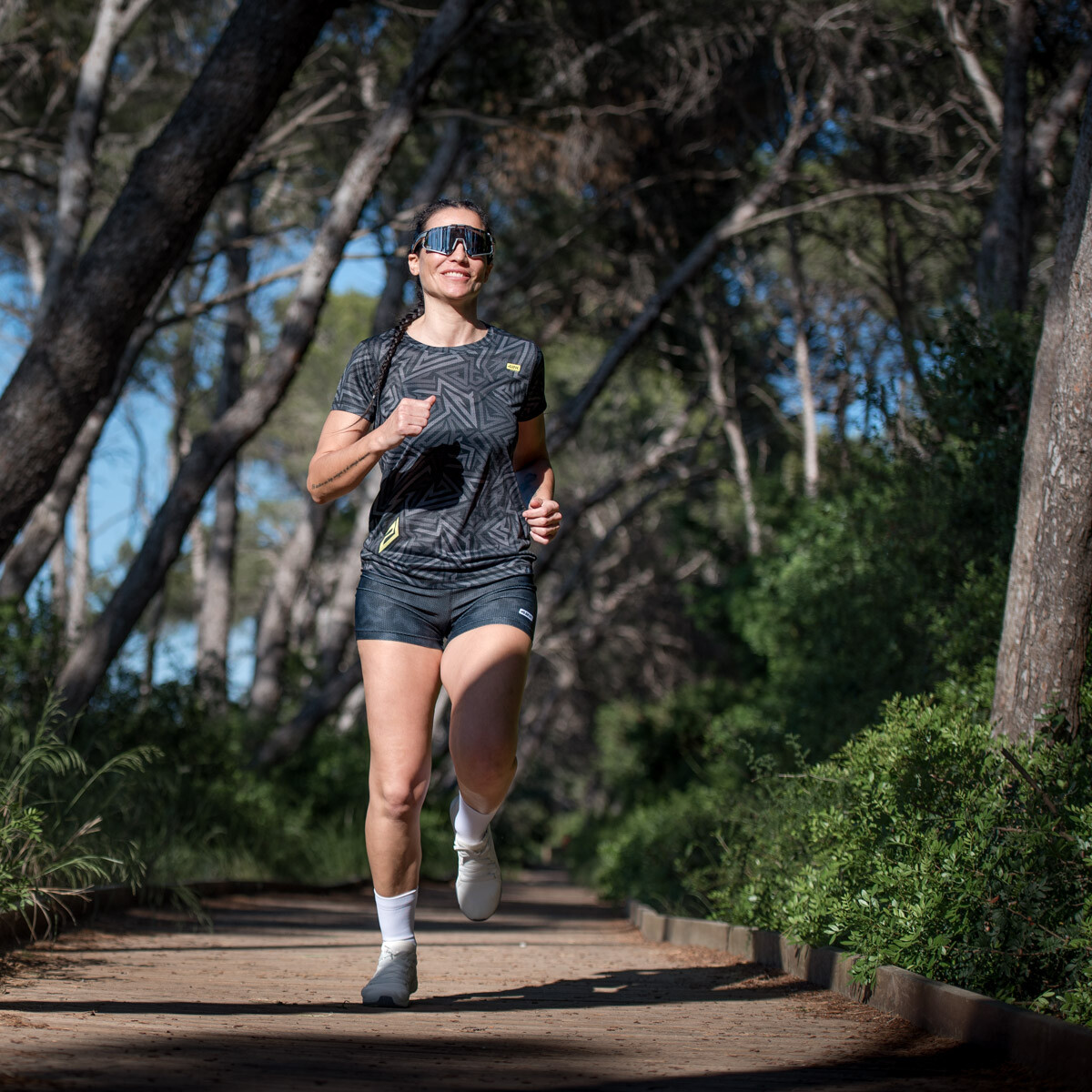
In our Online store You can find a wide range of technical clothing for running, both for men and women.
3. Warm up well before running
Warm up properly before running It is essential to prepare the body and especially feet, ankles, knees, and hips. There are no excuses for skipping the warm-up.
a good warm up It has many benefits: prevent injury, increase heart and respiratory rate, improve flexibility and improve concentration.
If you want to know more about the importance of warming up before running, you can do it with this article 'How to do a good warm-up before running'.
4. If discomfort appears, you have to stop
Act quickly. banish the idea of "no pain, no gain" (no pain no reward); pain is a warning that something is wrongSo anyone who decides to start running after the age of 40 and notices any persistent discomfort or pain should see a physical therapist or health professional to determine if there is a problem.

It is normal that during the first weeks (even the first months) the shoelaces, or what in scientific terms is called delayed-onset muscle soreness or DMAT, may appear to warn that the level of intensity of physical activity for which you are prepared has been exceeded.
That is, if one day you run faster or for longer than expected without having the appropriate physical condition, it is likely that you will suffer muscle fiber microtears which are the ones that generate the discomfort known as shoelaces.
The shoelaces are temporary and they go alone if you save a little repose and you combine it with gentle stretches and applying heat. What you should not believe is the false legend that 'the soreness disappears with more exercise' or that the remedy is to take sugar water; It's fake and it's dangerous. The shoelaces alert you that you have forced yourself too much, so rest for a couple of days and when they have disappeared, run again with caution.
What you do need to learn is how to differentiate stiffness from other muscle or joint pain that should put you on alert and ask for the opinion of a physiotherapist as soon as possible.
5. Healthy and balanced diet
Una healthy and balanced diet It is very important for anyone, but it is even more so in case of regular physical exercise and especially in people who start running after 40.
There are many variables that can affect the nutritional requirements or needs of a person (age, sex, weight, state of health, intensity of physical activity at work, intensity of sports activity...), but as a general rule it is necessary to bet on a complete diet that includes all the nutrients that the organism needs: carbohydrates, proteins, vitamins, fats and minerals.
And a very important aspect of a healthy and balanced diet is to take care of hydration, especially in summer. It is recommended to drink 1,5 to 2 liters of water a day, although hydration needs may vary depending on physical activity, temperature, humidity... On the importance of hydration, the article on our blog may be interesting for you titled The risk of dehydration in running.
If you have doubts or want to make changes to your diet and you don't know how to do it, it is advisable that you go to a registered dietitian-nutritionist.
6. Work the strength
If you're going to start running after 40, you must work the force. Strength training is very important for the entire population from the age of 40 (muscle mass begins to be lost from the age of 30) to maintain adequate muscle mass and to provide a state of healthy fitness as they get older. fulfilling years.
Stronger muscles will help us improve our performance in the gym. running. Force work is essential to progress and improve as a runner, but it is also very important to prevent injuries. It is essential to include strength work in the weekly training routine.
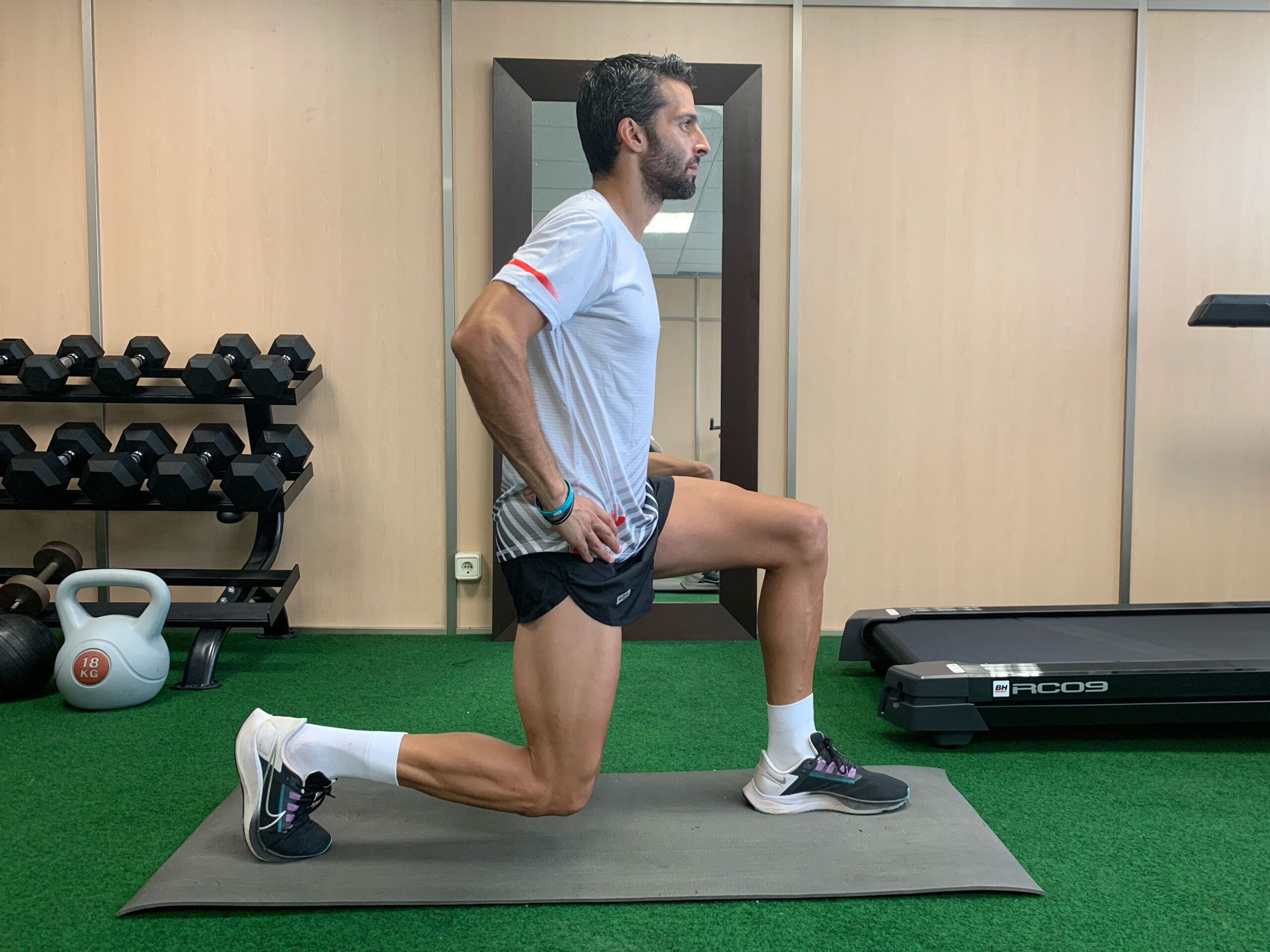
In our blog you can find different articles to learn much more about strength training and the importance it has to improve in the running. If you are starting to run or have been running for a while and don't know how to start working on strength, these articles can be very useful: 3 basic strength exercises for legs, Core training for runners o Strength training, essential for runners.
7. Give importance to rest
rest is very important to progress in the running. You have to take the steps with patience and without wanting to train more than you should.
Especially when you start running after 40, rest is just as important to progress as training. The rest allows the muscles to recover to face the next training session. Do not listen to anyone who tells you that to progress you have to run almost every day or that a single day of rest is enough to recover.
If you start running and try to go out every day to train, you will be taking a huge risk and you will surely end up suffering an injury or discomfort that will leave you in the dry dock.
A good start can be can be run 3 days a week and dedicate a fourth day to hard work.
8. Don't be in a hurry to put on a number
Don't be in a hurry to compete do not rush. It is advisable to increase the intensity of training gradually and following a plan, but without thinking about competitions or competitive challenges.
If you start running after 40, it is advisable dedicate between 4 and 6 months to training and to get your body used to the changes that the running will produce in it. Don't be in a hurry to sign up for a race no matter how much they tell you to. "It's the same as a workout, but with a bib".
It is true that the running It is a sport that asks for new challenges as you progress. Trying to improve yourself physically and mentally is very good, but you have to do things wisely. Participating in popular races and starting to monitor the results can be the perfect fuel you need to move forward and try to improve, but you have to take the steps very sensibly and without rushing.

If you follow a training plan with perseverance and seriousness, you will be able to go increasing pace and race time progressively. When you're able to consistently run 45 to 50 minutes without difficulty, it may be time to become a popular runner and enjoy the thrill of putting on your first 5K bib.
When you can complete 60 minutes of continuous running without difficulty, you can try the most popular distance: the 10K.
In a previous article on this blog I tried to answer questions about what to eat (and drink) before a competition. Now we are going to see a series of nutritional recommendations to recover from the efforts of a competition. In this article I am going to show you what to eat after a run.
All athletes know that once a competition is over it is really important tolimesit up correctly for recover all those metabolic fuels used in the test, but... what is the proper way to do it?
In this article we are going to see how intakes should be after a demanding competition that has forced us to make an intense and prolonged effort.
What to drink and what to eat after a race?
It is very important to ingestlimeAdequate times in the hours before a competition to obtain optimal sports performance and avoid possible discomfort that prevents you from competing at the best level during the race. But the intake after a physical effort is no less important because there has been wear and tear that can have negative consequences for recovery (and to a certain extent also for health) if it does not favor the replacement of all those levels that are important. .
The importance of knowing what to eat after a race is essential for proper recovery, especially when we talk about the physical efforts associated with racing. running or trail running.
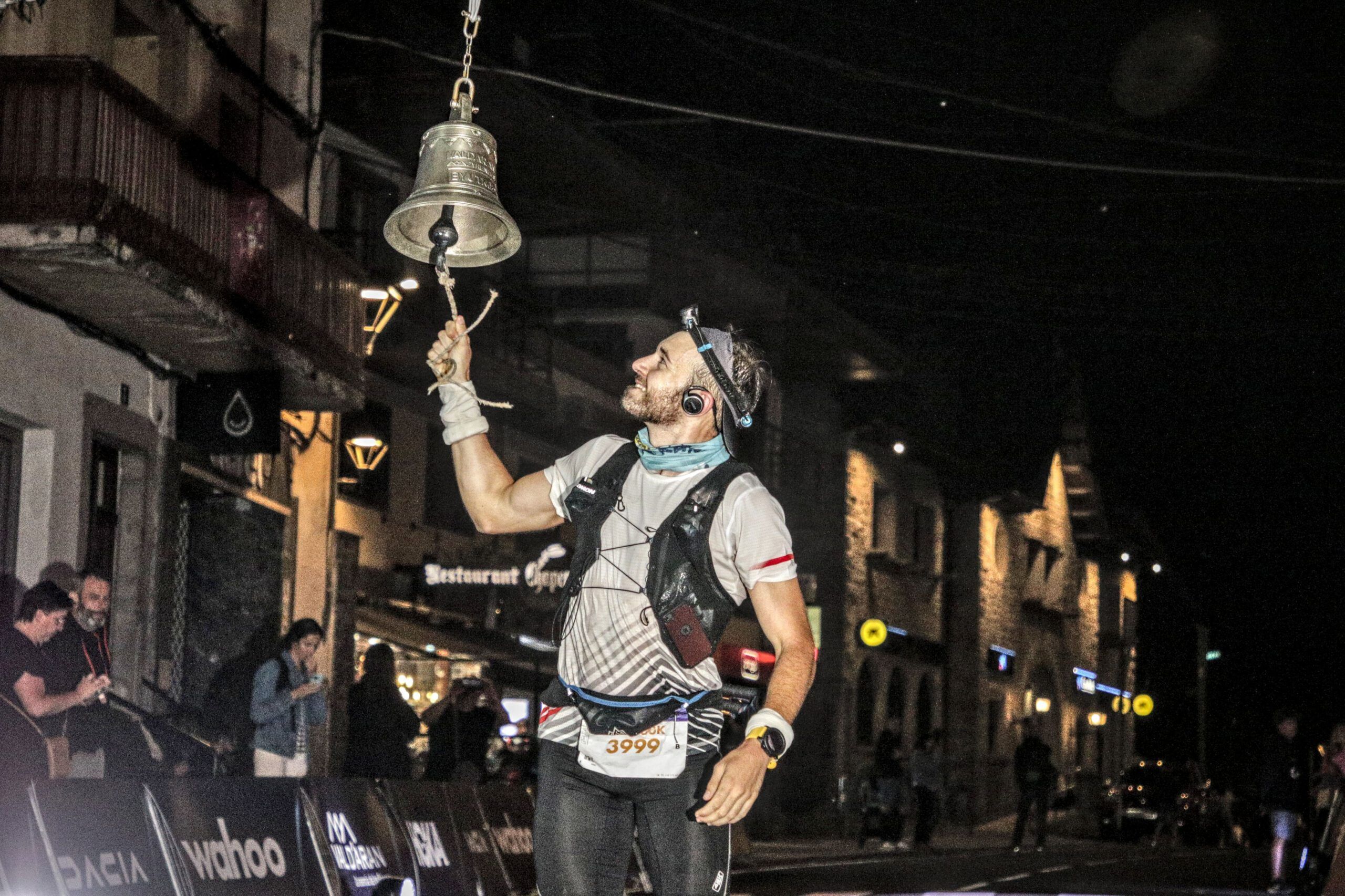
Glucogenic regeneration, the first thing
We will start by talking about glucose, a carbohydrate used as fuel by our body for physical activity and that is stored in the glycogen stores. Due to intense physical activity they usually end up practically empty.
We could say, therefore, that as a first response to what to eat after a race, would have to say that our tolimepost-competition performance should be focused on recuperación of sayings glycogen stores.
The replenishment of glycogen stores is quite slow. To get an idea, in the face of hypoglycemia (decrease in blood glucose commonly called "low sugar") it begins to recover from the first minute of ingesting alimeFoods rich in carbohydrates, such as bread, honey, jam, fruit, sugar... [Yes, we can takelimeSugary snacks considered unhealthy, since at that time we only care about avoiding fainting or possible medical complications]; however, glycogen stores may take time more than 24 hours to recover.
Recommendations for glycogenic regeneration
However, with a series of correct guidelines we can reduce the replacement time of glycogen stores to 12-24 hours. Let's go with some recommendations to achieve glycogenic regeneration:
- Firstly, No. it is convenient train within 48 hours to the competition, unless a low intensity activity is carried out. If we do intense physical activity, the body will continue to demand energy and will prevent what we are ingesting from serving to regenerate glycogen stores.
- consume thelimesnacks rich in carbohydrates during the 24 hours after the race. It is convenient that the intake of alimemeals rich in carbohydrates is carried out after a few 45 minutes after the end of the competition because in this way the recovery will be accelerated. That is, it is not only important whatliments to take, but when to take it is also important.
- The alimefoods rich in carbohydrates They are basic, but it is important to consume them without mixing them with fats and proteins, so that digestion does not slow down and therefore the absorption of nutrients and the filling of glycogenic deposits.
- In addition, given the great satiating power of the alimeFoods rich in protein and fat should be avoided in the first 6 hours after the end of the competition; The explanation of this recommendation is simple: if these are taken atlimeAt times it will be very easy to get satiated quickly, which will mean stopping drinkinglimentos rich in carbohydrates that are going to allow glycogenic recovery.
- But... what tolimeHow many are recommended for glycogenic recovery? Well, for example... fruits, miel, jams, rehydration drinks, potato, pasta, Sweet potato, rice, pan, juices, quince, vegetables, dried fruits...
- All of this in a white version (avoid wholemeal because its digestion is much slower and also its assimilation) and in the case of pasta and rice they must be very well cooked (not al dente), since the integral or little cooked are slower absorption.
- And it's not enough to justlimefoods rich in carbohydrates, you also have to include thelimefoods with high potassium content andliment liquids. For what reason? Well, because the liquid and potassium intake is necessary in glucogenic regeneration.
AlimeFoods rich in potassium and carbohydrates but poor in protein and fat
Many potassium benefits for the organism. It's a very important mineral for health and in addition to being very effective in avoiding muscle cramps (which is why most runners and runners appreciate it), it also helps prevent a wide range of problems such as high blood pressure, constipation, osteoporosis or cardiac arrhythmias.

It is recommended a daily consumption of about 3.500 mg of potassium a day, but in the case of glycogenic regeneration not all the alimePotassium-rich foods are ideal; We will see below a list of alimeFoods rich in potassium and carbohydrates but poor in protein and fat:
- Potato.
- Sweet potato.
- Banana banana.
- Kiwi.
- Dried peaches.
- Raisins.
- Dates
- Watercress.
- Spinach.
- Broccoli.
- Brussels sprouts.
- milk caps
- Scallions.
I hope these recommendations help you to know what to eat after a race.
One of the questions that friends who run have asked me many times is what eat before a race. In this article I am going to indicate a series of nutritional recommendations before facing a competition running.
What to drink and eat before a race?
It is very important to ingest alimesuitable nts in the hours before a competition to obtain a optimal sports performance y avoid possible discomfort that prevent you from competing at the best level during the race.
It is necessary to emphasize that the sports season has several phases (rest, preparation, competition and post-competition) and therefore thelimentation will not be the same at different times of the season.
It is also important when talking about what to eat before a race to differentiate between the needs of highly trained people (regular or elite athletes) and people who run for fun or leisure (popular runners and runners), since the energy pathways used during physical activity will not be the same. Obviously, any elite athlete knows what to eat before a race, but among popular runners it is common to find great ignorance.
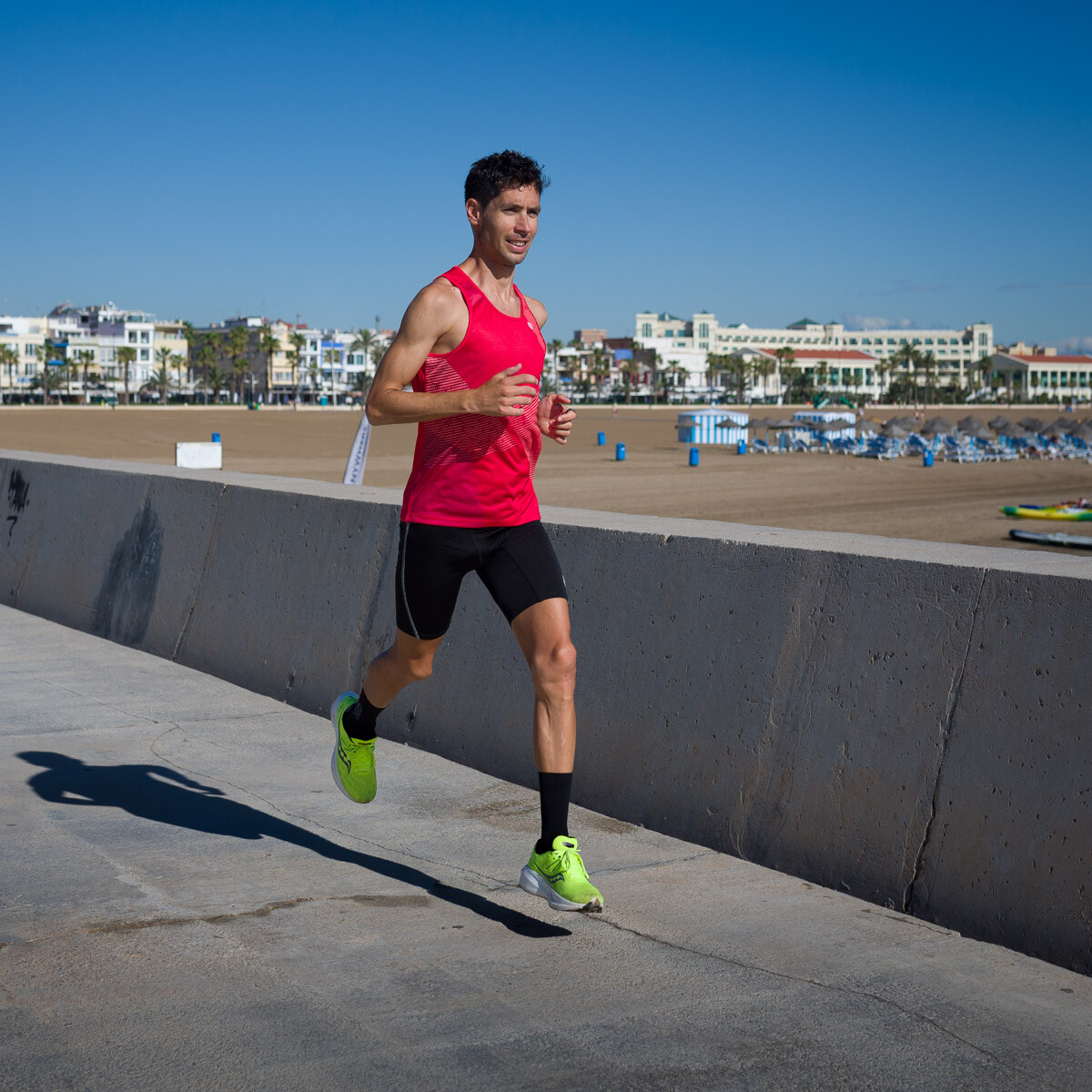
While the highly trained runner uses intramuscular fatty acid oxidation and is much less dependent on muscle glycogen (glucose store), the less trained athlete consumes a greater amount of carbohydrates (glucose) and a lower proportion of fatty acids. This supposes a lower sports performance in the case of the less trained athlete, because glycogen is very limited, while fatty acids can be used for a longer time.
Nutritional recommendations to face a competition
But what, when and how should we eat before a race? We are going to see the what, when and how of what to eat and drink before facing a demanding physical activity.
– About 3 hours before physical activity
3 hours before facing the test, a intake rich in alimefoods rich in carbohydrates (since glucose shortage is directly related to fatigue and decreased sports performance) and to a lesser extentlimented with protein, fiber and fat.
If we have the competition in the morning, my breakfast proposals would be the following:
- Milk or vegetable drink with cereals.
- Milk or vegetable drink with toast with honey.
- Milk or vegetable drink with oats.
If we have the competition in the afternoon, my lunch/meal proposal would be the following:
- pasta or rice (always white) with a small amount of vegetables and a little bit of tuna.

Why pasta or white rice? Well, because its digestion is much faster and therefore the assimilation of its nutrients is also much faster. Furthermore, to ensure correct and rapid assimilation, both pasta and rice must be well cooked and not "al dente" because it will be much more difficult to digest.
– Between 30 and 60 minutes before physical activity
The protocol at this time will start with 2-3 glasses of water about 15-20 minutes before making this intake to avoid slowing down digestion.
between the tolimeIn the absence of approximately 1 hour before the start of the test, it is necessary to include aliments of easy digestion as bread with honey, quince or jam; Skimmed yoghurts, non-whole grain cereals, low-fat biscuits, non-whole muesli, fruit or dried fruit.
All of this can be replaced by a few 300-500ml of isotonic drink rehydration sugar.
– Between 5 and 10 minutes before the start of the test
Ingest isotonic drink sugary orlimeFoods in small quantities that are very easy to digest, such as dried fruits. In case you do not consume isotonic drinks at the moment, take 2-3 glasses of water.
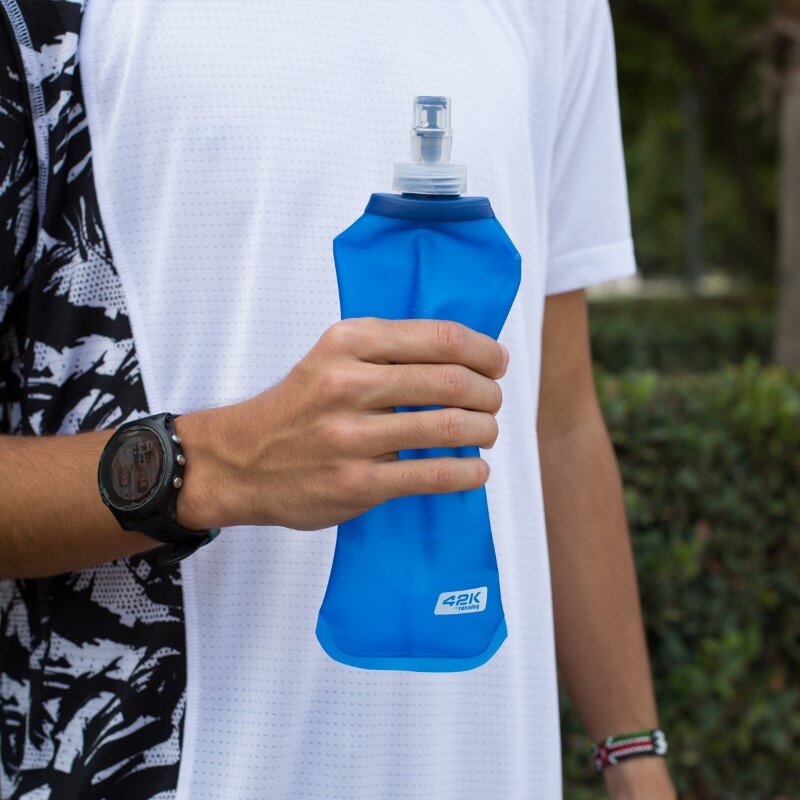
Everything must be trained before the race: also food and drink
A very important warning is that everything you eat or drink before the race must have been tried several times previously on training days. On the day of the competition you do not have to do experiments: no need to trylimeFoods or drinks that we have not tried before and we are sure that they feel good to us.
It is recommended try everything in training first and adapt these guidelines to our protocol. I give an example: the isotonic drink 5 minutes before the start may not feel good, but a handful of raisins and dried apricots do; Or that an hour before you don't feel like a jam sandwich but you do feel like some non-integral cookies. It is very important that each athlete knows himself as well as possible and knows with certainty what tolimeFood and drinks work for you and feel good.
None of the advice or recommendations on what to eat before a race that appear in this article (or in that of any other nutrition specialist) should be put into practice on the day of the race as it is possible for discomfort, allergies, intolerances, hypoglycemia...
I insist again that it is vitally important do not introduce changes or do tests on our a guidelineslimentation the day of competition because we can ruin the preparation of many months for a foolish thing. Not only do you have to train resistance, strength or elasticity, but also you have to train thelimentation and hydration, especially when we face tests that will require a prolonged and constant effort of more than 60 or 90 minutes.
Of course, you don't have to worry as much about what to eat before a 5K race as what to eat before a half marathon or a marathon. My advice to those runners who intend to prepare for a competition such as the half marathon or the marathon is to see a sports nutritionist for advice and guidance on the correctlimentation that they must incorporate into their planning for the sporting objective.
42K · All rights reserved

